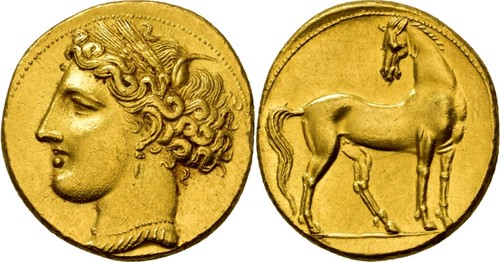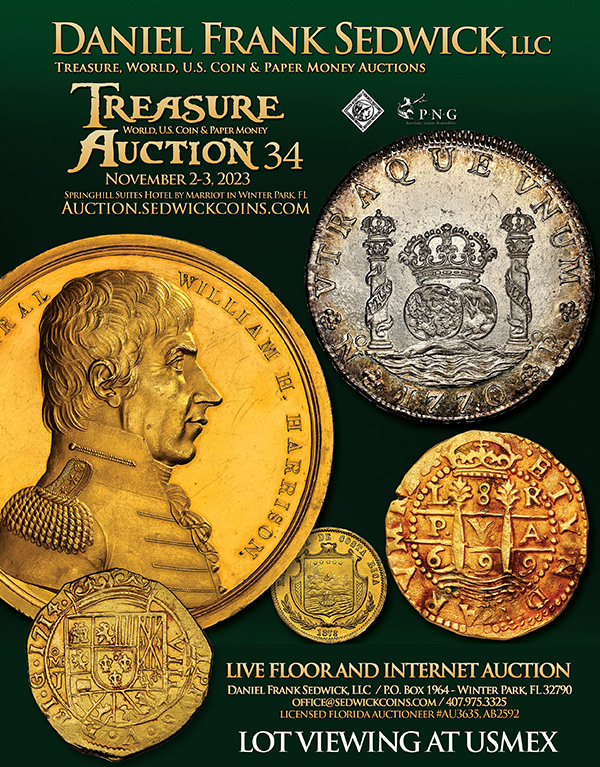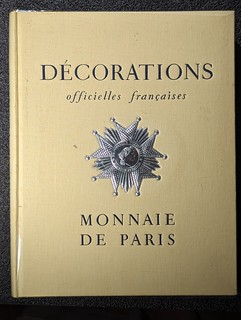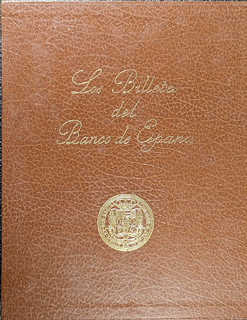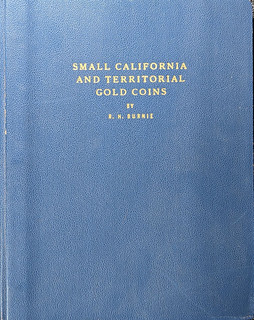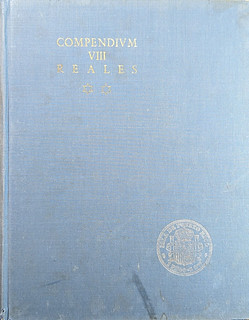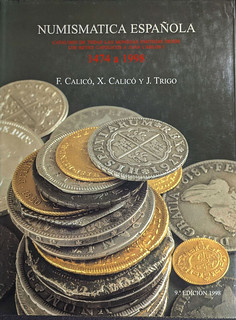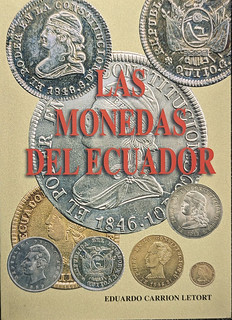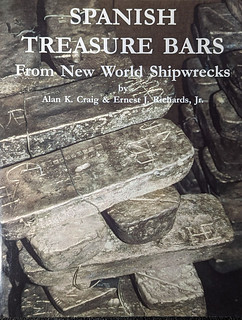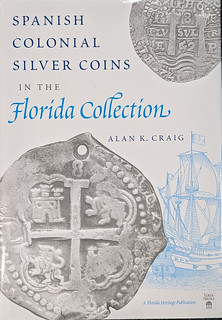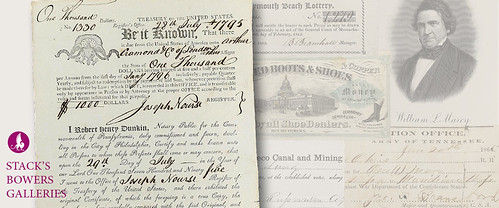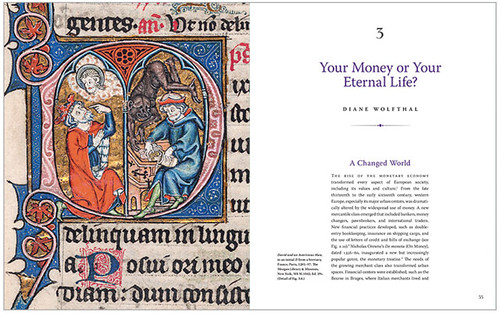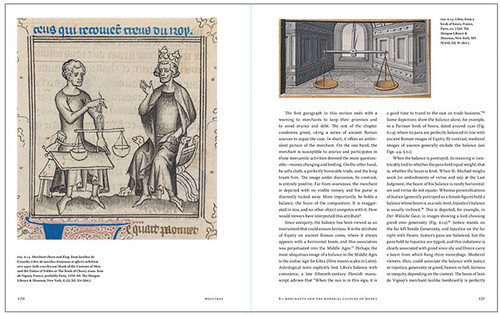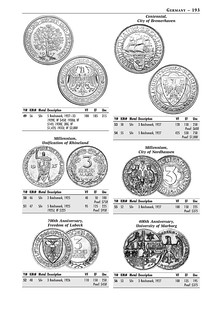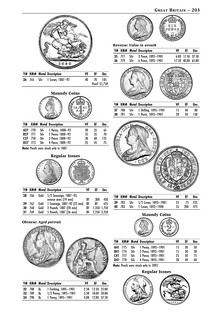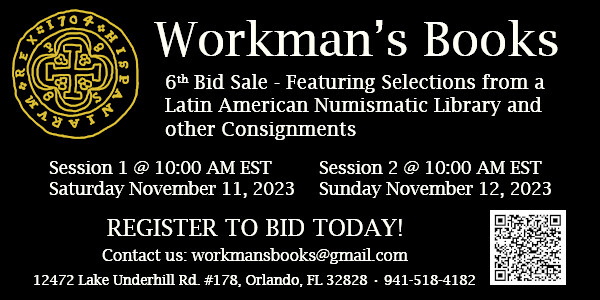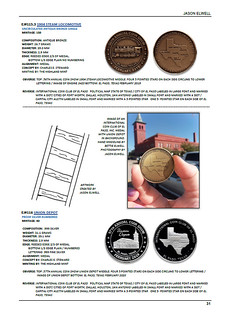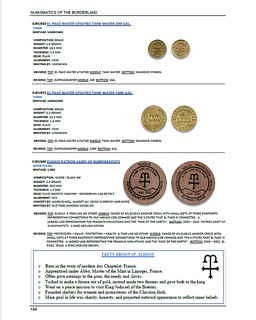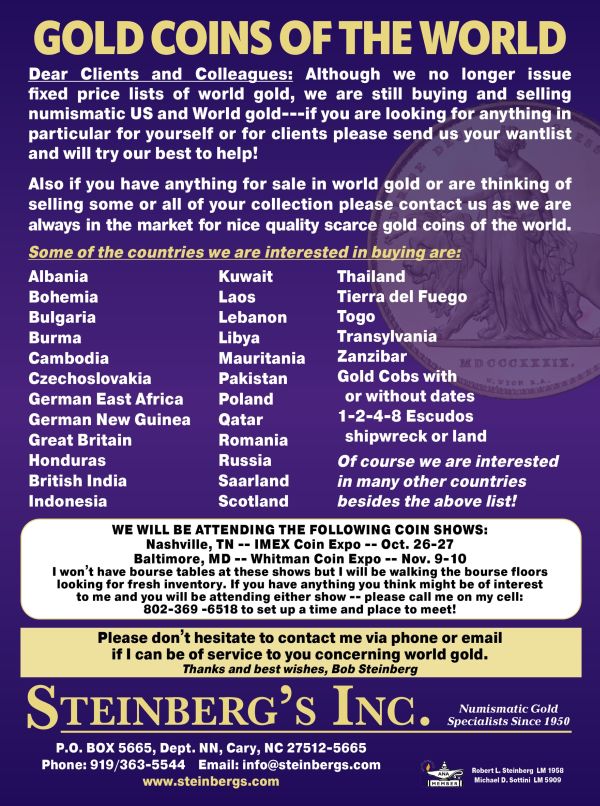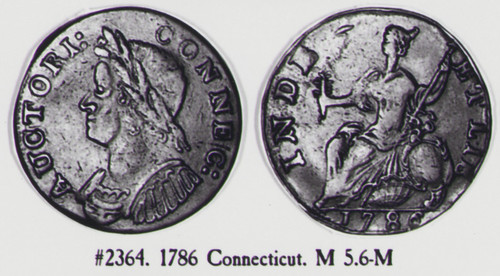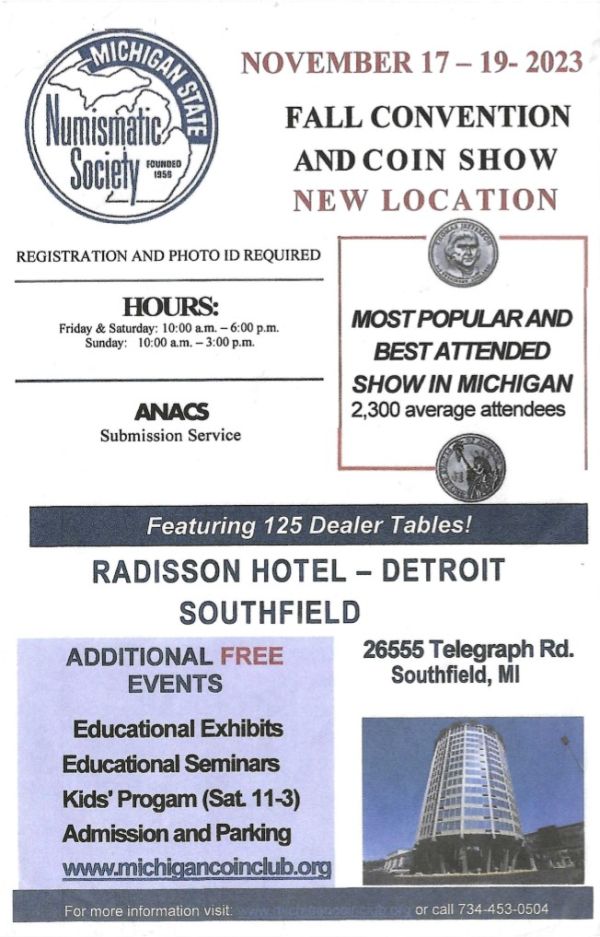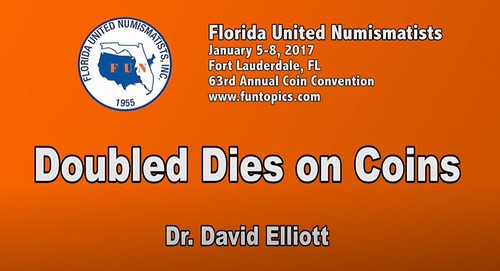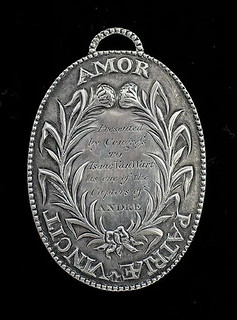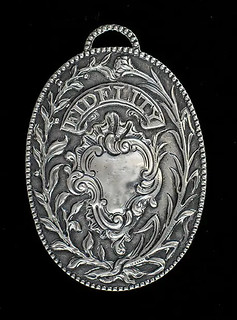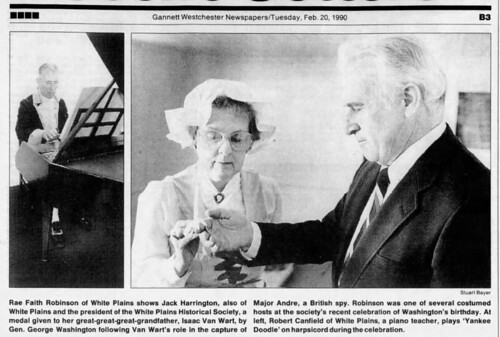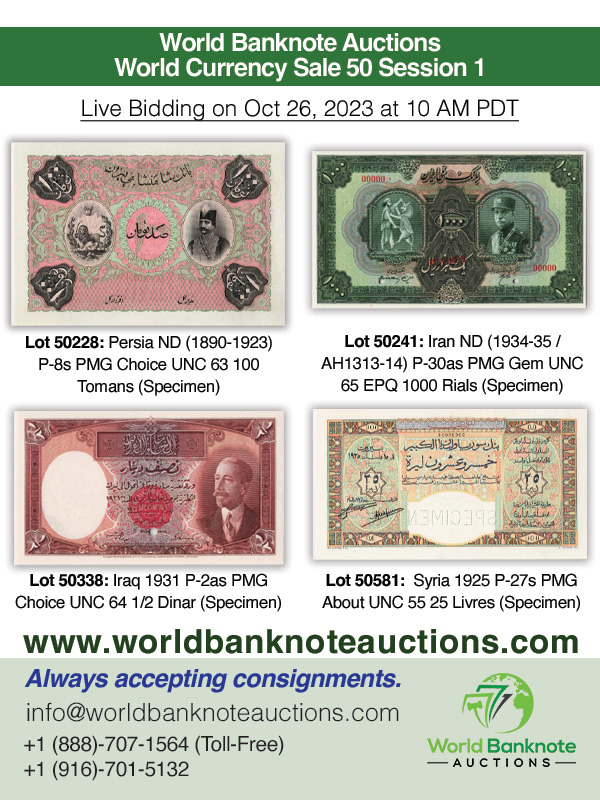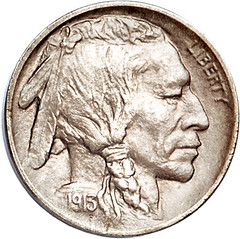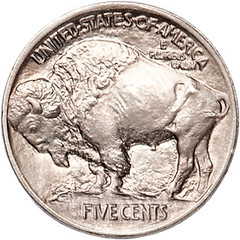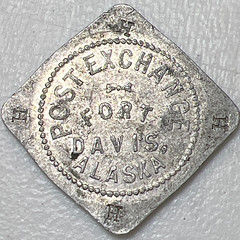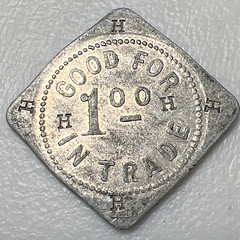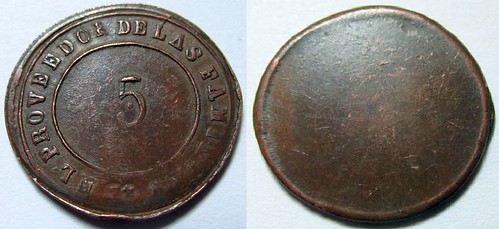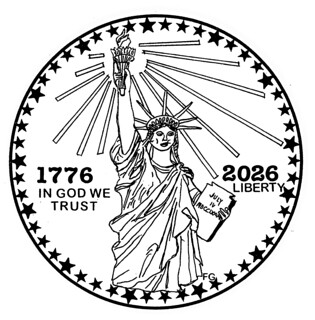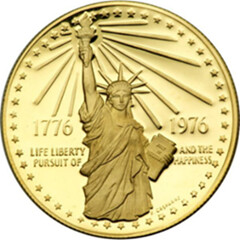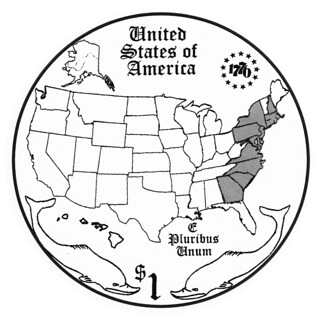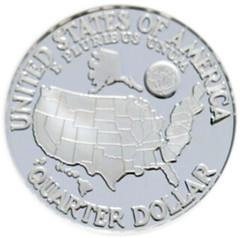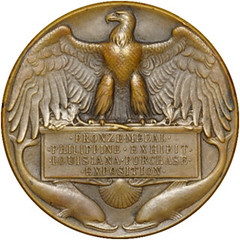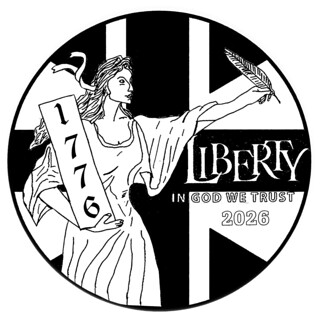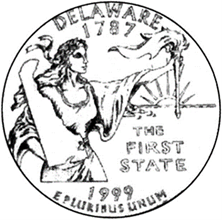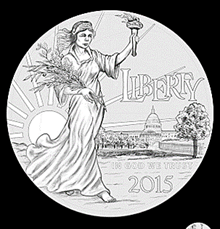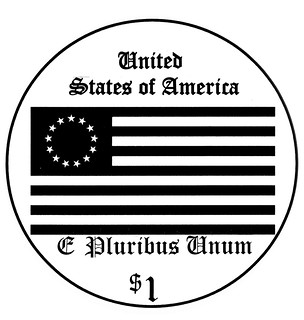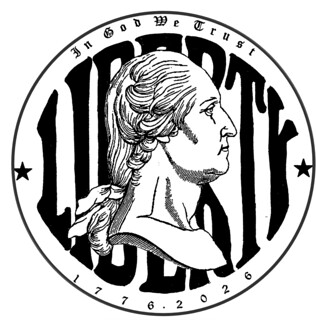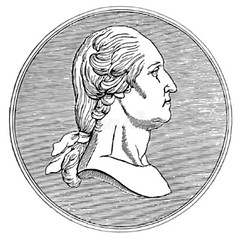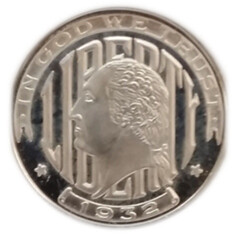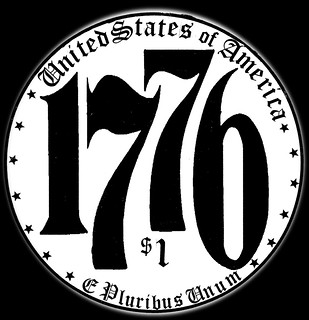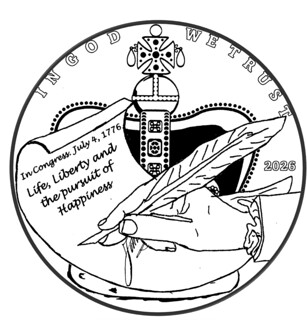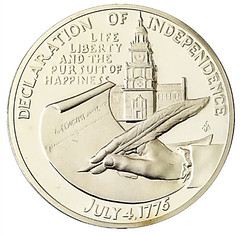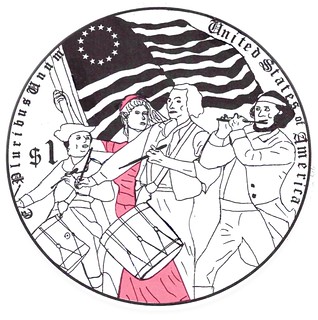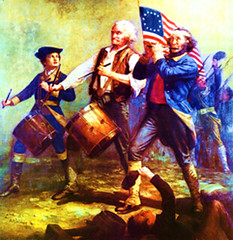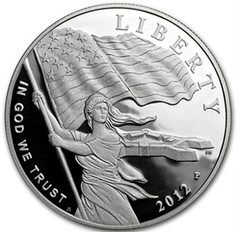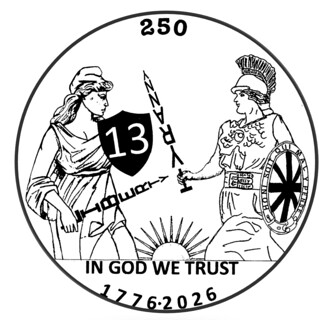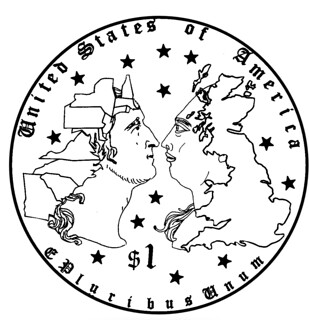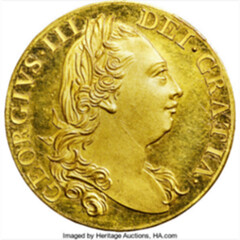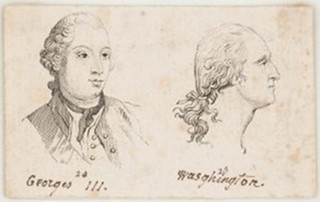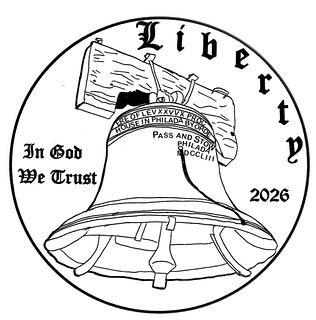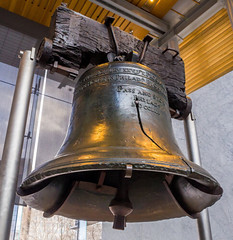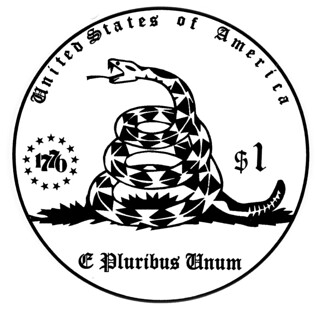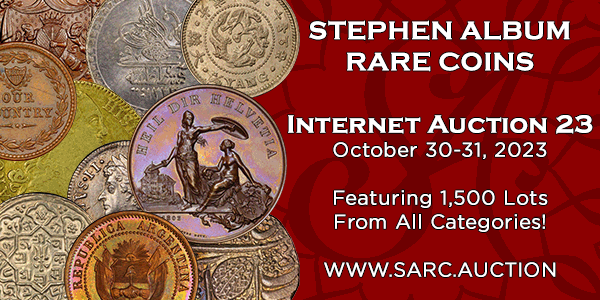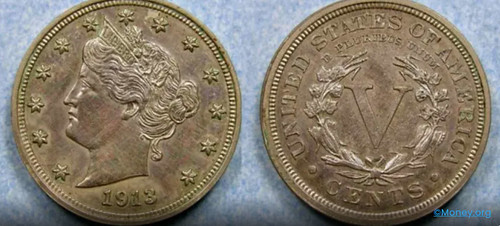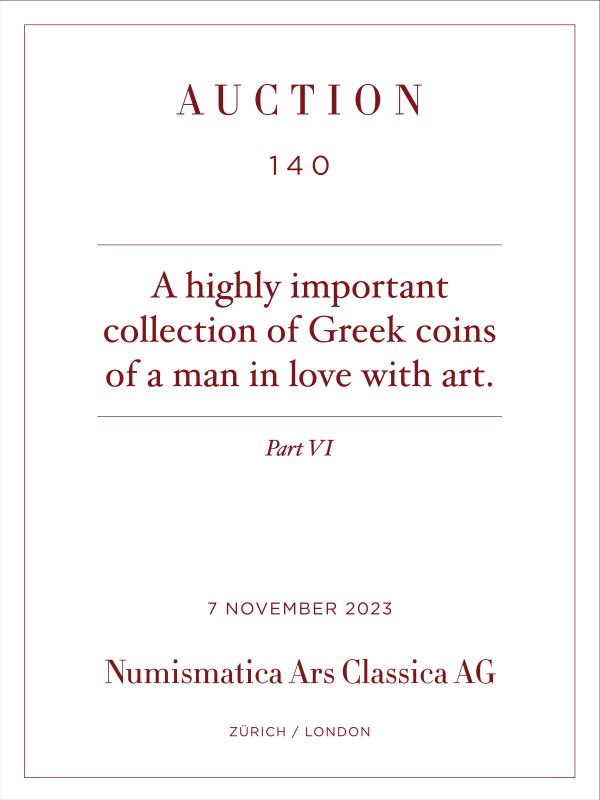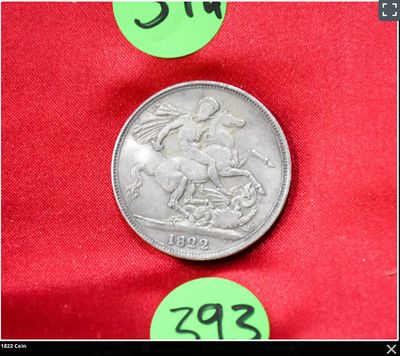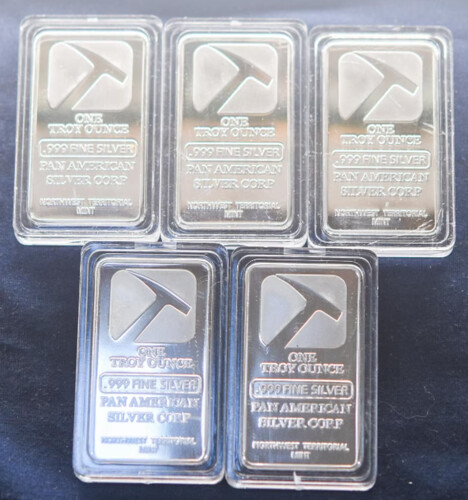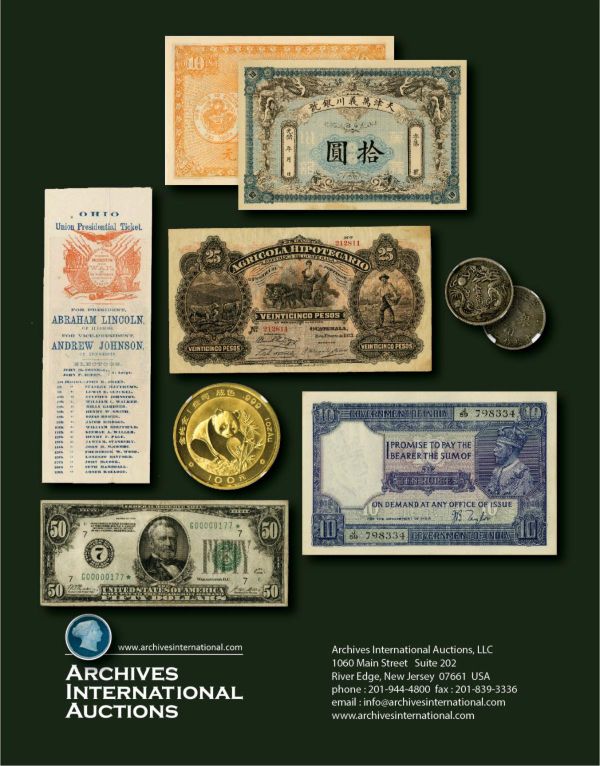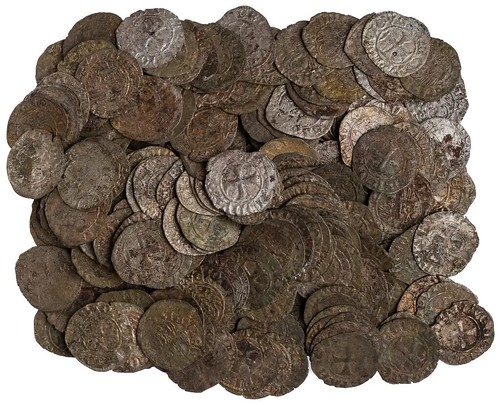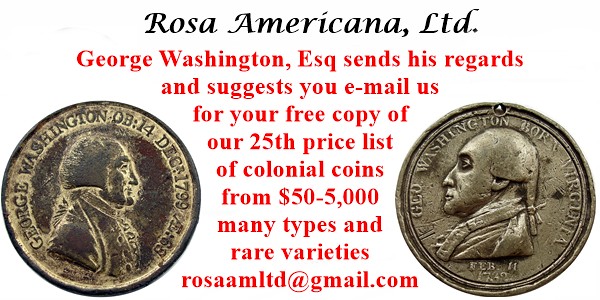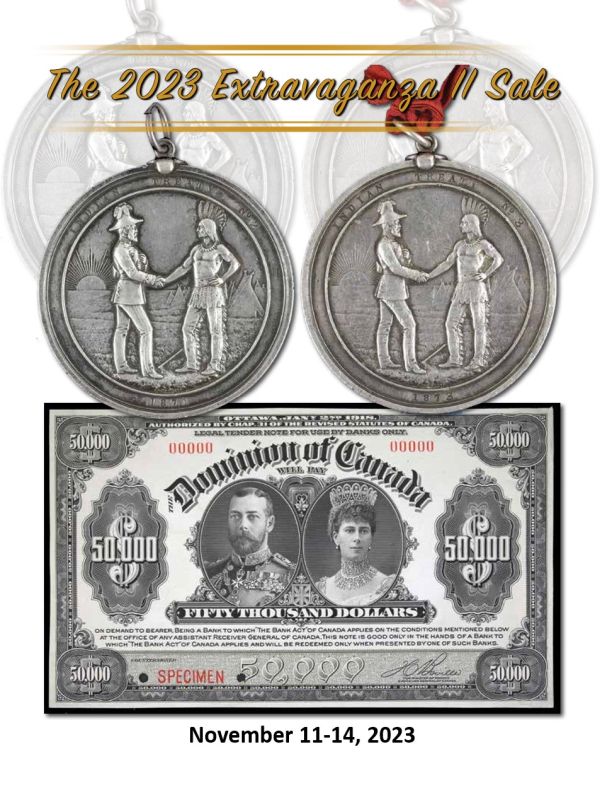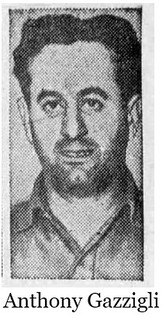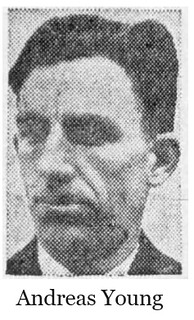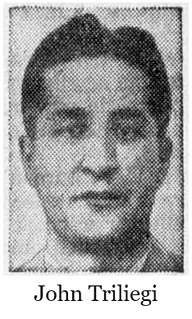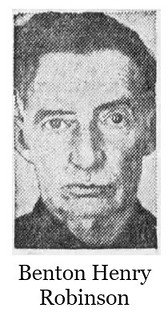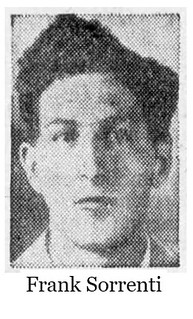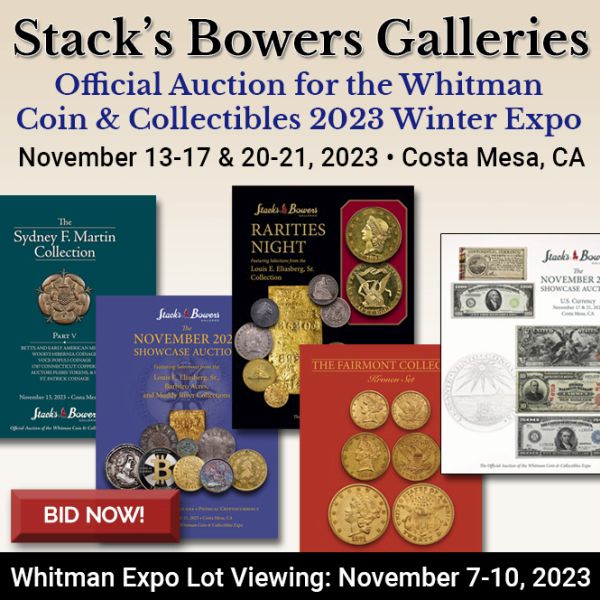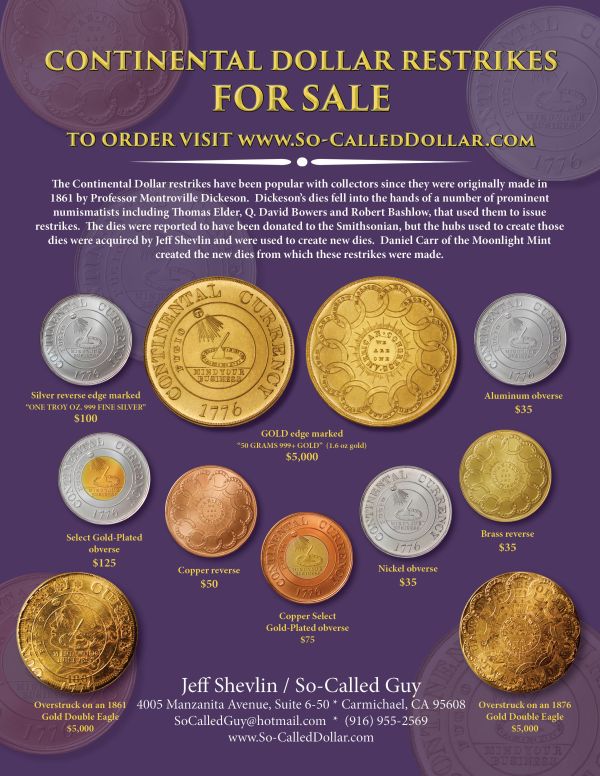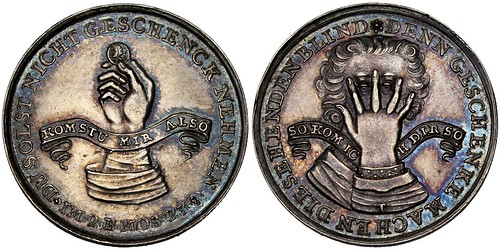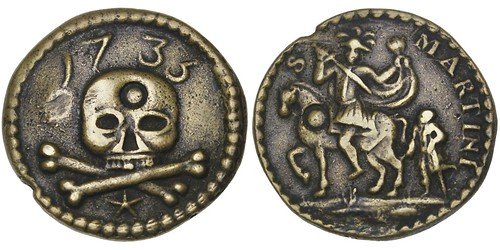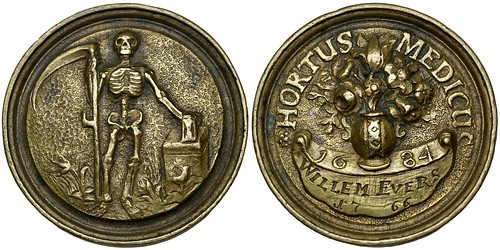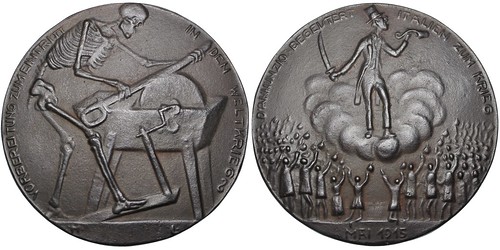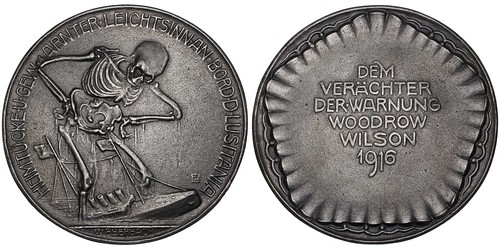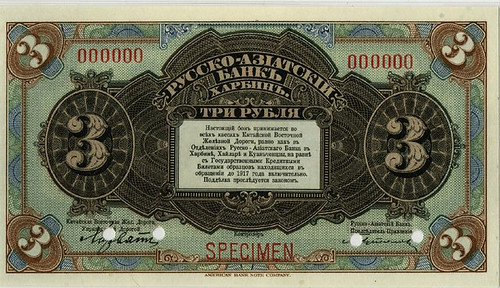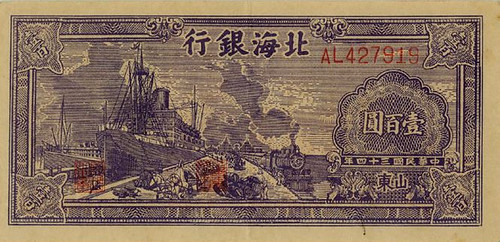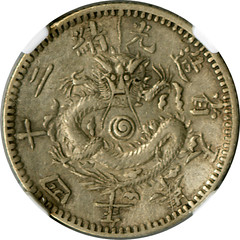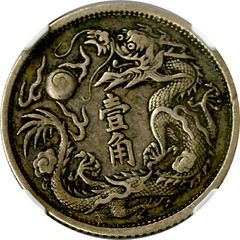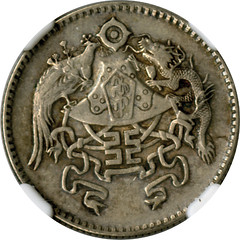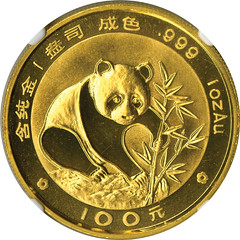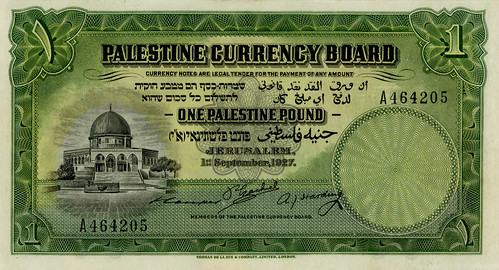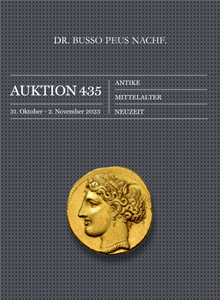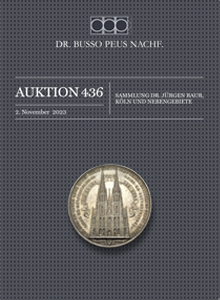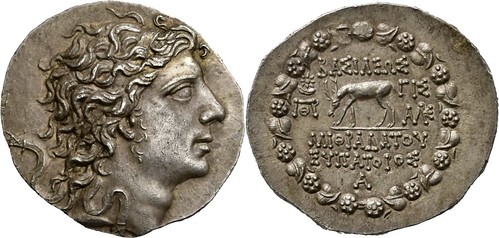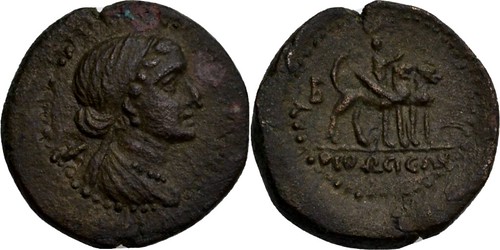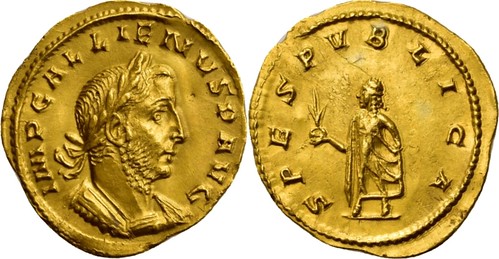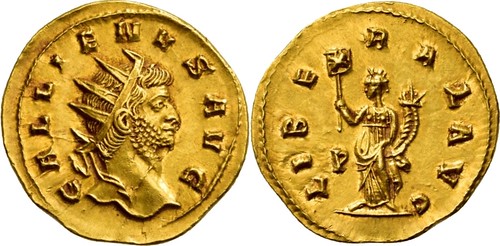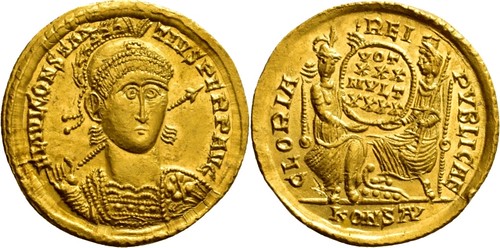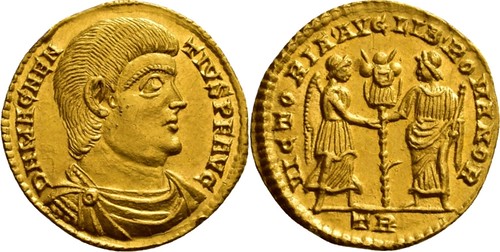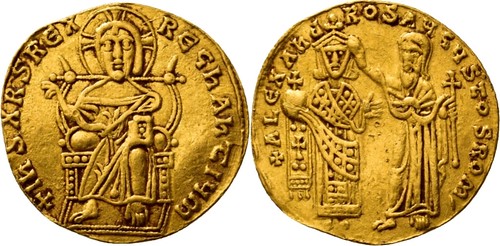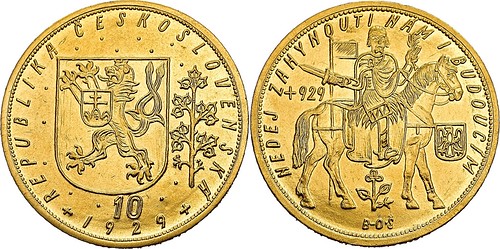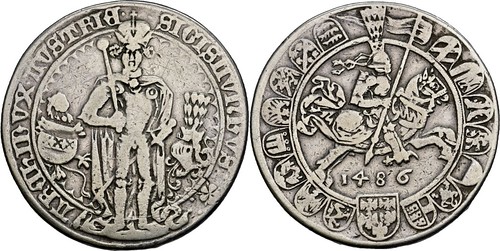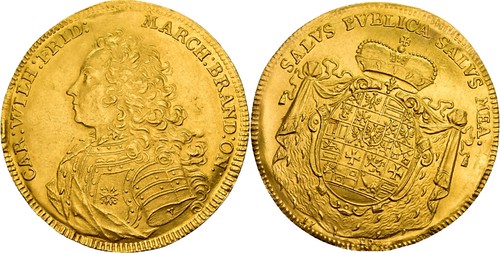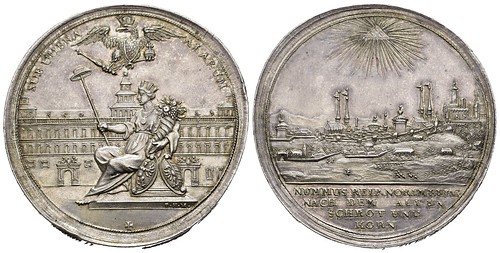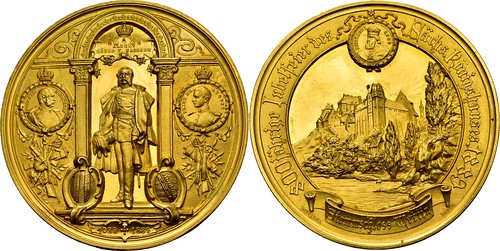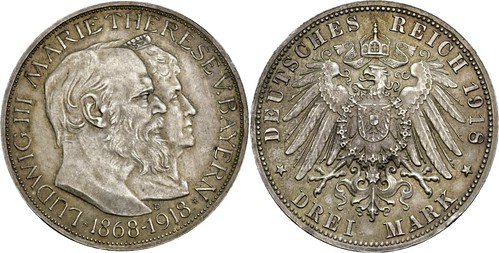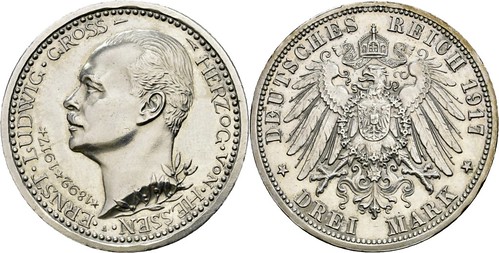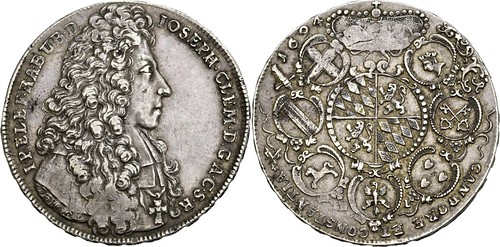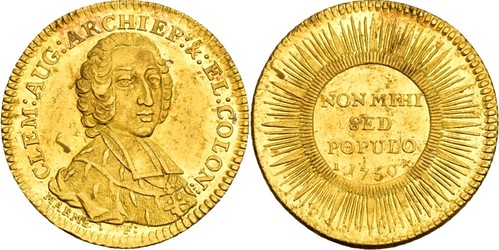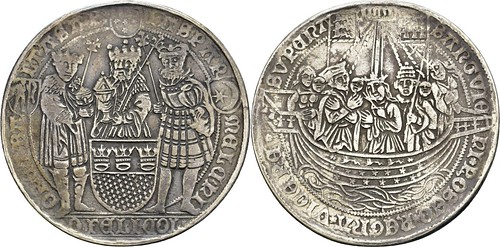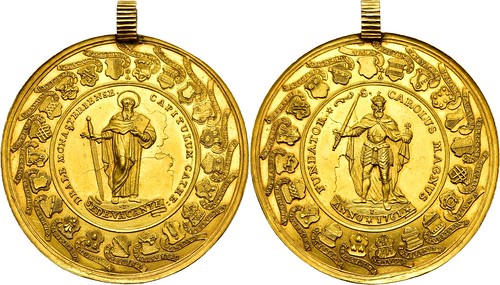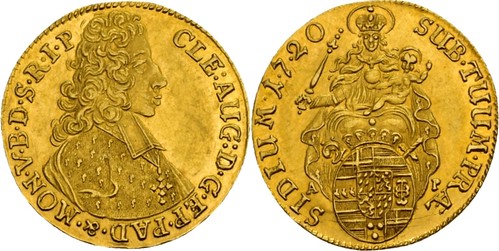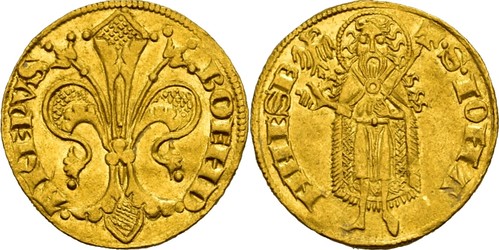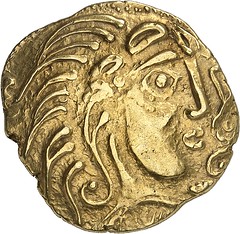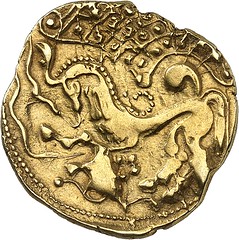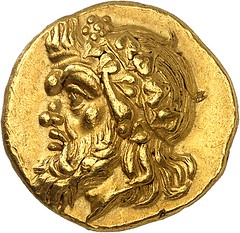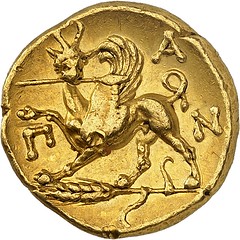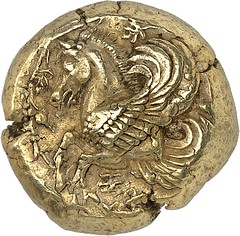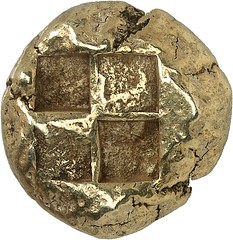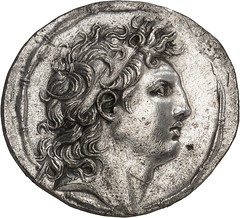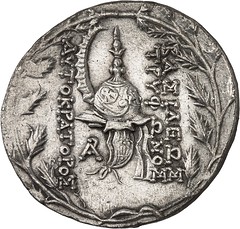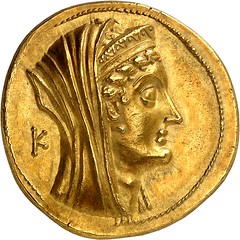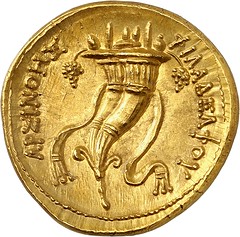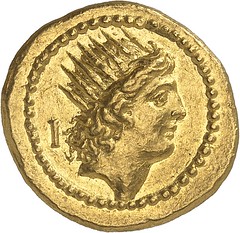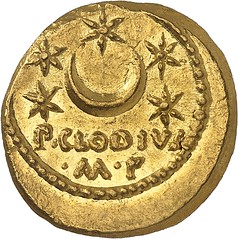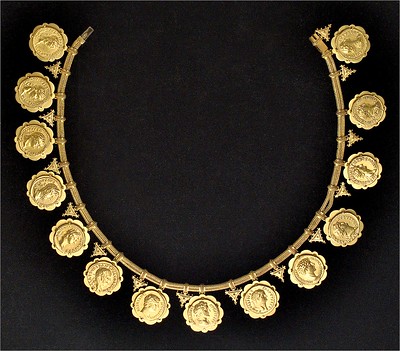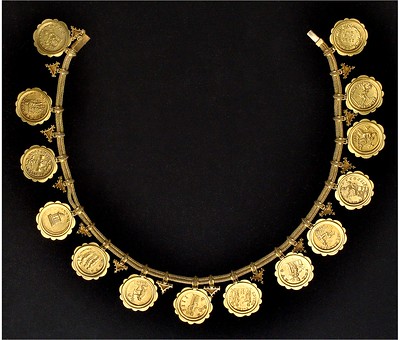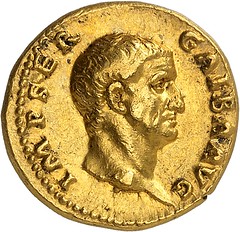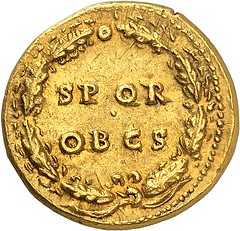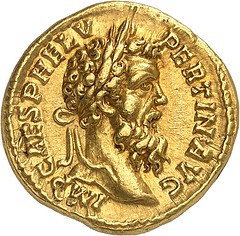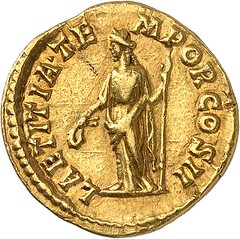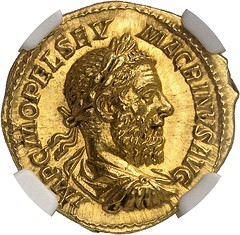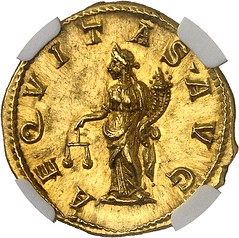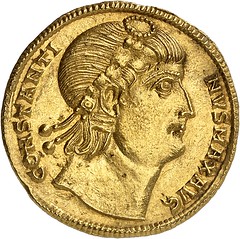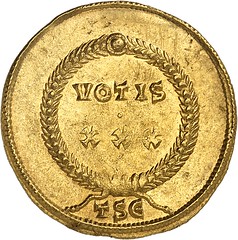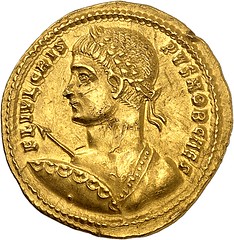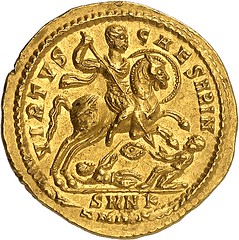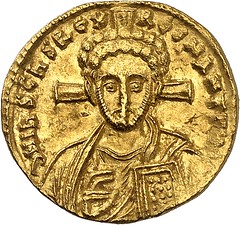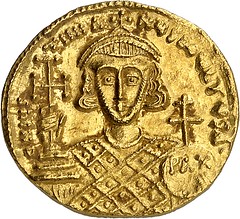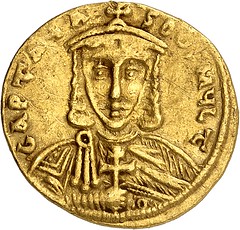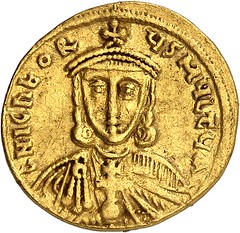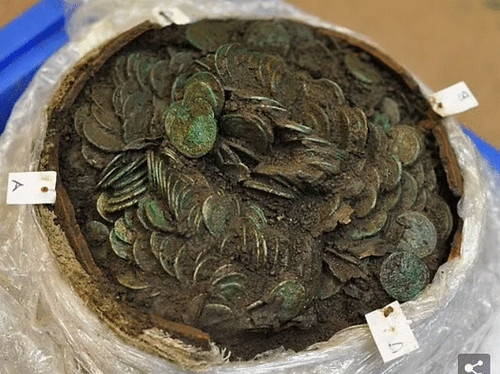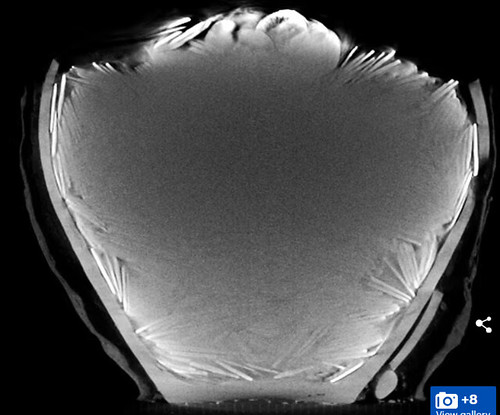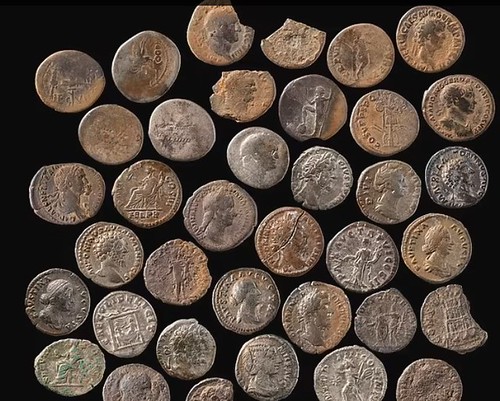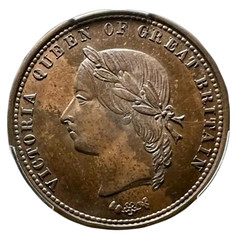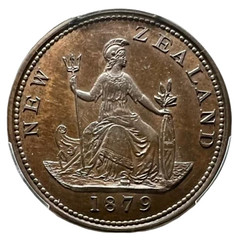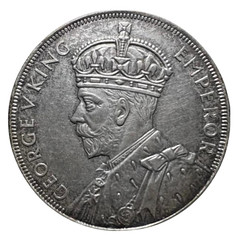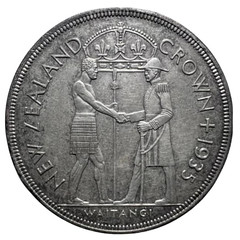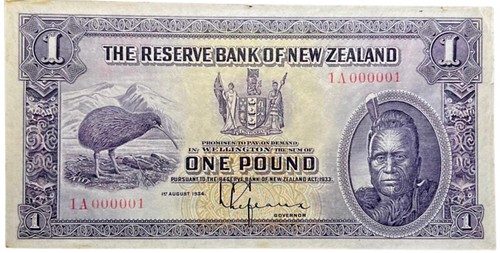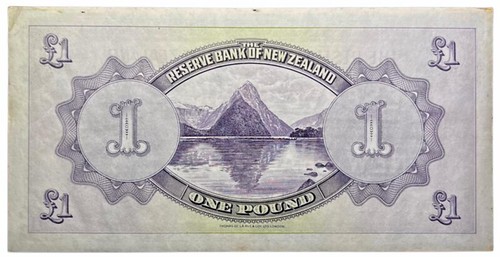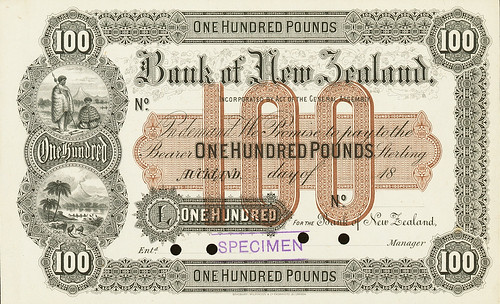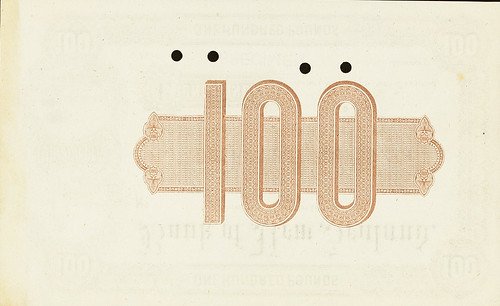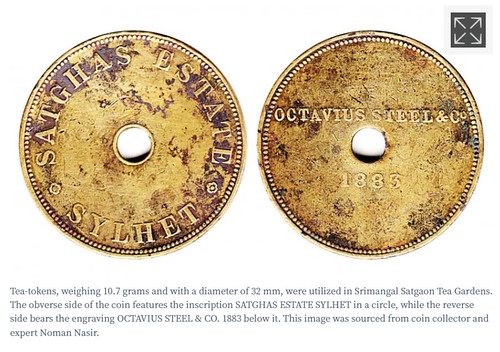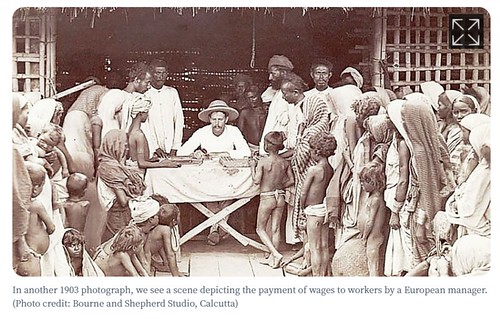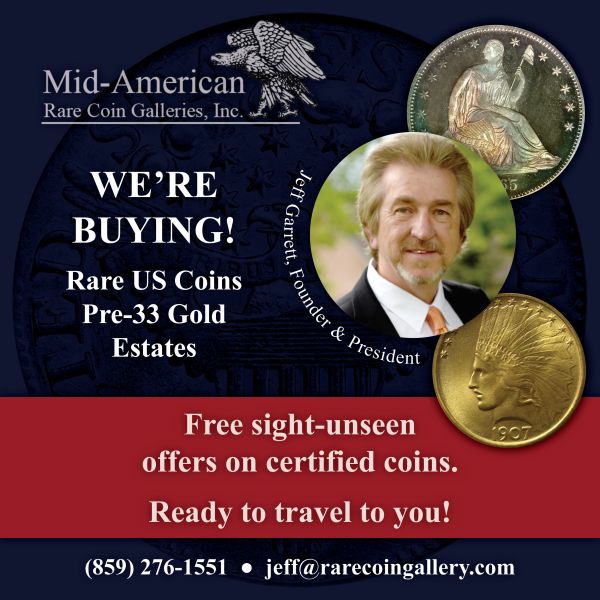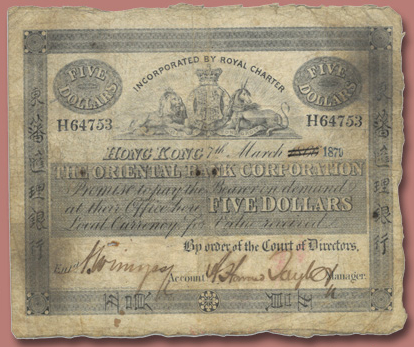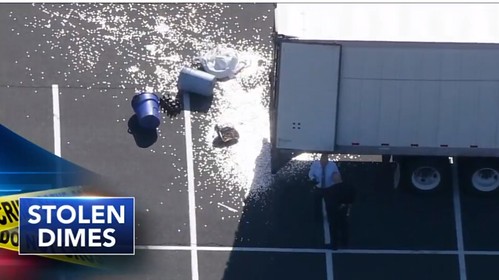
Visit our NBS Sponsors
About UsThe Numismatic Bibliomania Society is a non-profit association devoted to the study and enjoyment of numismatic literature. For more information please see our web site at coinbooks.org SubscriptionsThose wishing to become new E-Sylum subscribers (or wishing to Unsubscribe) can go to the following web page link MembershipThere is a membership application available on the web site Membership Application To join, print the application and return it with your check to the address printed on the application. Print/Digital membership is $40 to addresses in the U.S., and $60 elsewhere. A digital-only membership is available for $25. For those without web access, write to: Jeff Dickerson, Treasurer AsylumFor Asylum mailing address changes and other membership questions, contact Jeff at this email address: treasurer@coinbooks.org SubmissionsTo submit items for publication in The E-Sylum, write to the Editor at this address: whomren@gmail.com BUY THE BOOK BEFORE THE COINSale Calendar |
- WAYNE'S WORDS: THE E-SYLUM OCTOBER 22, 2023
- THE LONG AND THE SHORT OF E-SYLUM EMAILS
- WORKMAN BOOKS SALE 6 SELECTIONS
- 1795 $1000 U.S. TREASURY BOND OFFERED
- NEW BOOK: MEDIEVAL MONEY
- NEW BOOK: MODERN WORLD COINS, 15TH EDITION
- NEW BOOK: NUMISMATICS OF THE BORDERLAND
- NEWMAN PORTAL SCANS TAYLOR PLATES
- VIDEO: DOUBLED DIES ON COINS
- THE VAN WART ANDRE CAPTURED MEDAL
- NOTES FROM E-SYLUM READERS: OCTOBER 22, 2023
- SEMIQUINCENTENNIAL DOLLAR DESIGN IDEAS
- AI-GENERATED NUMISMATIC CRAPOLA
- BUYER BEWARE: FAKE COINS AND BULLION
- EXHIBIT: MEDIEVAL MONEY AT THE MORGAN
- VOCABULARY TERM: OPENWORK
- THE 1952 LAVERE REDFIELD BURGLARY
- RON GILLIO INTERVIEW, PART THREE
- NUMISMAGRAM MEDAL SELECTIONS: OCTOBER 22, 2023
- ARCHIVES INTERNATIONAL AUCTION 88
- DR. BUSSO PEUS FALL 2023 AUCTIONS
- KUENKER AUCTIONS 395-397, PART 2
- NORTH WALES ROMAN COIN FIND
- A NUMISMATIC HISTORY OF NEW ZEALAND
- TEA TOKENS
- 1879 HONG KONG ORIENTAL BANK NOTE OFFERED
- THE MINT'S PRODUCTION MAINTENANCE DIVISION
- PHILADELPHIA DIME HEIST THIEVES CHARGED
Content presented in The E-Sylum is not necessarily researched or independently fact-checked, and views expressed do not necessarily represent those of the Numismatic Bibliomania Society.
WAYNE'S WORDS: THE E-SYLUM OCTOBER 22, 2023
 New subscribers this week include:
Douglas Lang, courtesy Akio Lis, and
Samuel Skokan, courtesy Larry Lee.
Welcome aboard!
New subscribers this week include:
Douglas Lang, courtesy Akio Lis, and
Samuel Skokan, courtesy Larry Lee.
Welcome aboard!
Thank you for reading The E-Sylum. If you enjoy it, please send me the email addresses of friends you think may enjoy it as well and I'll send them a subscription. Contact me at whomren@gmail.com anytime regarding your subscription, or questions, comments or suggestions about our content.
This week we open with an update on E-Sylum email issues, numismatic literature and ephemera sales, three new books, updates from the Newman Numismatic Portal, and more.
Other topics this week include U.S. Treasury bonds, medieval money, numismatics of the borderland, doubled dies, semiquincentennial coin design ideas, openwork, the LeVere Redfield burglary, Ron Gillio, fixed price and auction previews, tea tokens, and the Philadelphia Mint dime thieves.
To learn more about the paper currency issues of the Bank of Spain, Spanish treasure bars, Modern World Coins, the Frederick Taylor colonial coin auction photographic plates, the Van Wart Andre Captured medal, a Dance of Death medal, and New Zealand rarities, read on. Have a great week, everyone!
Wayne Homren
Editor, The E-Sylum
THE BOOK BAZARRE
THE LONG AND THE SHORT OF E-SYLUM EMAILS
Thanks so much for all of your patience and emails as we've worked through some delivery issues with the weekly E-Sylum. While many of you never had issues, users of AOL, Yahoo and some other email providers have experienced problems in recent weeks. These providers were rejecting our emails as spam, which led to follow-on issues causing several subscriptions to be dropped.
As noted earlier, email providers will never tell you exactly why they reject a message (not wanting to tell actual spammers how to get round their rules). But that leaves legitimate senders like us in the dark, having to guess and experiment.
Last Sunday we tried an experiment that worked in a big way - dozens and dozens of readers reported receiving their issue after a multi-week dry spell. What worked was sending a very short email with links to the full issue on our website. We also sent a normal version with all of the content in the body of the email itself. These are actually far smaller than they look because images are not embedded in the message; rather, they are hosted elsewhere on our Flickr archive. But apparently the size of the issue was still triggering the problem for AOL, Yahoo and some others.
So for the time being we'll continue sending our both versions to everyone of the mailing list. Only one will get through to some of you. In time we'll likely switch to the shorter version for everyone.
Here are some of the reader reactions to last Sunday's experiment. The first came from Martin Purdy in Upper Hutt, New Zealand. -Editor
Martin Purdy writes:
"Thanks for running the "short version" trial - as of a few minutes ago I have both versions via Gmail, but only the short version via Yahoo. So perhaps Yahoo does simply hiccup when the text length exceeds a certain amount."
Corleen Chesonis writes:
"You may be on to something. Tonight the short version came through, but not the regular one. My Verizon e-mail address goes through AOL and they can be very annoying with their spam filters. I check the AOL online spam folder every day because it likes to filter things that are not spam, but the E-Sylum wasn't even there. Very frustrating when they just reject something and don't ever notify anyone. It looks like the size of the message may be part of the issue."
Peter Bertram writes:
"Problem solved, and AOL was the problem! Since reactivating my old Gmail account anything you send is arriving! Yee haw - I'm back in the fold."
AOL user Lee Lofthus writes:
"After an absence of a couple months, your short email arrived safely tonight. The full issue did NOT arrive. Hope this helps you diagnose the delivery problems. Also, I thoroughly enjoy your issues and your work as editor, glad I am back among the living recipients! If there are advantages to being on my Gmail id rather than AOL, pls let us readers know in the future if appropriate."
I don't think we've ever had a report of trouble from a Gmail user. Outlook also seems to be working OK. -Editor
Phil Bressett writes:
"So happy to find my E-Sylum in my mailbox this morning. Whatever you did, it worked. Please keep doing it! Thanks for all you do"
Robert Conrad writes:
"I have not been getting the e-mail for a few weeks. Yes, this came through and was easy enough to click on to read the full one. Works for me!"
Mindspring user Tony Chibbaro writes:
"I did receive your shortened version late yesterday evening. But I did not receive the long version. I think that the shortened version with links to the regular issue is the way to go in the future. And thanks for keeping this information coming! You do a fantastic job!!!!"
Charles Wilkinson writes:
"I did receive it this week in the new format. I was able to use the links to access it and read online. Please continue to send it to me in the new format. This is very informative and I have purchased books after reading about them in your newsletter. Thank you very much."
But some who aren't getting the full issue anymore miss it. -Editor
John Barber writes:
"Last night's issue came to my mailbox. The link worked fine to the whole issue. I'd sure like to get the direct copy back via AOL, however.
"Let me add my thanks to the kind words of hundreds of others for what you do and have done for a long time on the e-sylum. It is, and remains, a mainstay of the hobby."
Paul Stolzer writes:
"The smaller issue arrived. I prefer the standard issue. I look forward to it every week and think you do a great job with it."
We can't control what AOL and Yahoo decide to do, but at least we seem to have found a workaround for now. Thanks again for everyone's patience and kind words. -Editor
To read the earlier E-Sylum article, see:
WAYNE'S WORDS: THE E-SYLUM OCTOBER 15, 2023 : Are we getting too big for our britches?
(https://www.coinbooks.org/v26/esylum_v26n42a01.html)
WORKMAN BOOKS SALE 6 SELECTIONS
Alan Workman has a numismatic literature sale closing November 11-12, 2023. Here's some more selected lots. -Editor
Workman's Books is conducting its Sixth sale, "Sale 6 - Selections from A Latin American Numismatic Library and other Consignments.". Accompanying the Latin American Numismatic Library is a sizeable consignment of books, catalogs, magazines, journals, and dealer fixed price lists on numismatics, orders & decorations, militaria, shipwrecks, sunken treasure, lost treasure, treasure hunting, lost mines, and treasure in the American West.
SESSION 1:
- Books: 1 to 467
- Auction Catalogs & Dealer Fixed Pricelists: 468 to 734
SESSION 2:
- Auction Catalogs & Dealer Fixed Pricelists: 735 to 1267
- Journals & Magazines: 1268 to 1345
- Posters: 1346
- Newspapers: Lot 1347
- Photos: 1348 to 1349
- Postcards: 1350 to 1351
- VHS Tapes: 1352 to 1354
- DVDs: 1355
Lot 3: Administration Des Monnaies et Medailles & Yves Malecot (Ed.). DECORATIONS OFFICIELLES FRANCAISES. Administration Des Monnaies et Medailles, Paris. 1956. Small fo. (6), 291, (7) pages. Original cream cloth, lettered in blue, embossed central device in silver, jacket. handsomely illustrated on 54 plates, many of then in color. Clear mylar Jacket/Book Fine. Lot weight: 5 lbs 4oz. Subject(s): French Orders and Decorations.
Lot 18: Banco de Espana. LOS BILLETES DEL BANCO DE ESPANA 1782-1979. Banco de Espana, Madrid. 1979. 4to. xvi, (2), 419, (4) pages. Original brown leatherette, gilt, slipcase. Third Edition. 492 color currency photo plates. Spanish text. Slipcover/Book Fine. This book is a pictorial and historical guide to the paper currency issues of the Bank of Spain from 1782 through 1979. Lot weight: 5 lbs 10oz. Subject(s): Spanish Paper Money.
Lot 43: Burnie, R.H. SMALL CALIFORNIA AND TERRITORIAL GOLD COINS. The Advertiser Publishing Co., Pascagoula. 1955. 4to. (4), vii, (2), 96 pages. Original blue textured card covers, gilt, 3-hole bound. Valuation tables. Table of weights. Fine. This book is a catalog and guide to the fractional and territorial gold coins of California and the other gold producing states. The topics covered include: Small California Gold: Quarter Dollars Octagon, Quarter Dollars Round, Half Dollars Octagon, Half Dollars Round, One Dollars Octagon, One Dollars Round; Territorial And State Gold: Alaska, Idaho, Montana, Nevada, Oregon, Washington, Utah, Louisiana, British Columbia; California Gold Tokens; Miscellaneous Tokens; So-Called Dollars; and Type Listing Small California Coins Listed As To Initial Types. Lot weight: 1 lbs 1oz. Subject(s): United States Coinage.
Lot 49: Calbeto de Grau, Gabriel. COMPENDIO DE LAS PIEZAS DE OCHO REALES. Juan Ponce De Leon, San Juan. 1970. fo. (2), 733, (1) pages. Matching original blue cloth, gilt, silver corner devices. Two volumes. Inscribed by the author in Volume I. b&w coin photos throughout. Spanish and English text. cover edges worn, worn through in places, covers rubbed and soiled, Near Very Good. A comprehensive study of the Eight Reales of Spain, Mexico, Central America, and South America, an index of the rulers of the time period, and a listing of mints in alphabetical order. It catalogs virtually every eight real coin ever minted and is richly illustrated with hundreds of photographs. It is regarded by many as the definitive guide to eight reales. Rare author signature. Lot weight: 9 lbs 15oz. Subject(s): Spanish, Spanish American Coinage.
Lot 55: Calico, F. & X. Calico & J. Trigo. NUMISMATICA ESPANOLA. CATALOGO DE LAS ACUNACIONES REALIZADAS DESDE LOS REYES CATOLICOS A JUAN CARLOS I 1474 A 1998. Gabinete Numismatico Calico, Madrid. 1998. 4to. (2), 766, (4) pages. Original green buckram, gilt, jacket. 9th edition. Text illustrations. Fine. This book is a comprehensive illustrated catalog to the gold, silver, and copper coinage of the various monarchs and mints in Spain and the Spanish New World colonies from 1474 to 1998. Lot weight: 5 lbs 10oz. Subject(s): Spanish, Spanish American Coinage.
Lot 60: Carrion Letort, Eduardo. LAS MONEDAS DEL ECUADOR 1830-1997. Eduardo Carrion Letort, Quito. 1997. 12mo. 59, (2) pages. Original pictorial card covers. b&w coin photos throughout. Fine. This book is a history and price guide to the Republic coinage of Ecuador. The coins are organized by denomination and then by date with obverse and reverse coin photos for each type. Lot weight: 0 lbs 5oz. Subject(s): Ecuadoran Coinage.
Lot 86: Craig, Alan K. SPANISH COLONIAL SILVER COINS IN THE FLORIDA COLLECTION. University Press of Florida, Gainesville. 2000. 4to. xxv, 217, (12) pages. Original charcoal cloth over gray boards, lettered in silver, jacket. Inscribed by the author. Frontispiece, document print. Tables. Maps. Appendix. Bibliography. Index. b&w coin, document, and historical photos throughout. English text. Jacket/Book Fine. This is a catalog of the silver cobs in the State of Florida Collection that were recovered from the Spanish Plate Fleet wrecks in Florida waters and handed over to the state as part of their division from the salvors. A history of the mints and the minting processes, mint scandals, silver mining, and the coins are covered in this work. Lot weight: 1 lbs 10oz. Subject(s): Spanish American Coinage.
Lot 87: Craig, Alan K. & Ernest J. 'Seascribe' Richards, Jr. SPANISH TREASURE BARS FROM NEW WORLD SHIPWRECKS. EN RADA Publications, West Palm Beach. 2003. 4to. (2), x, 213, (2) pages. Original pictorial card covers. Inscribed by the authors. Frontispiece, map. Maps. Tables. b&w and color historic photos. b&w ingot photos throughout. Fine. This book was written to explain what is known to date regarding treasure ingots. There are over 300 illustrations plus a 42-page table of data on 963 of the silver bars recovered from Nuestra Senora de Atocha. The bars are presented in both black & white and color photos and illustrations. The people who found them, the New World regions where they were made, and details of their markings are also presented. Chapter topics include: The Mimbres Bars; The Padre Island Wrecks; A Shipwreck near Cayo Ines de Soto; The Power Plant Wreck; Treasure Bars from the Atocha; Nuestra Senora de las Maravillas; The Jupiter Wreck; Treasure Bars from the 1715 Plate Fleet; El Nuevo Constante nee Duke of York; Cuban Copper Treasure Ingots; and Old and New Falsifications of Spanish Bars. Long out of print. Scarce. Lot weight: 1 lbs 8oz. Subject(s): Spanish American Ingots.
To go to the sale, see:
Selections from A Latin American Numismatic Library and other Consignments Sale 6
(https://www.icollector.com/Selections-from-A-Latin-American-Numismatic-Library-and-other-Consignments-Sale-6_as91196)
To visit the website:
https://workmansbooks.square.site/
To read the earlier E-Sylum article, see:
WORKMAN BOOKS SALE 6 ANNOUNCED
(https://www.coinbooks.org/v26/esylum_v26n41a03.html)
1795 $1000 U.S. TREASURY BOND OFFERED
A Stack's Bowers Galleries blog article by Numismatist Asher Zelson highlights several interesting paper items in their upcoming sales. -Editor
Numismatic-adjacent
material is a personal point of interest for me as a collector, and I relish the opportunity to handle items that fall just beyond the scope of coins, paper money, tokens, and medals. Such ephemera can often have a deep, intriguing history and, under the right circumstances, bring significant premiums due to their obscurity and scarcity. Both the internet-only and live sessions of our November 2023 U.S. Currency Auction feature unique examples of numismatic-related paper ephemera that are sure to pique the interest of paper money and exonumia collectors alike.
The internet-only session offers two lottery tickets from the late 1790s and early 1810s. One is from Boston, Massachusetts, issued to raise funds for the purpose of repairing Plymouth Beach (lot 21474). The other originates from Reading, Pennsylvania, produced to raise money toward building a stone bridge over the Schuylkill River (lot 21476). Also offered is an advertising note for silver & copper-tipped boots and shoes
(lot 21479), a transportation ticket authorizing the travel of a Confederate soldier in the Tennessee Army during the Civil War (lot 21477), and a detailed vignette of former Secretary of State William L. Marcy that appeared on 1880 and 1891 $1000 Silver Certificates (lot 21481). Also interesting are currency notes from Union Volunteer Infantry forces in Michigan during the tail-end of the Civil War (lot 21475), scrip from a California mining company in the 1860s (lot 21478), and a 1873 Sewerage Certificate Bond from the D.C. Board of Public Works (lot 21471).
The most impressive of these paper offerings is found in the live session: a scarce 1795 $1000 Treasury Bond (lot 20001). The purpose of the bond, issued by the United States Register's Office to the merchant firm Arthur Cramond & Co. of London, was to bolster public credit and address the redemption of national debt. Significantly, the bond was signed by Joseph Nourse, who served as the first Register of the Treasury from 1781 to 1829. The notary seal of Robert Henry Dunkin is affixed on the bottom left of the bond.
Graded Choice VF-35 by PMG, the bond measures 7.25 by 13 inches and is adorned with elegant signatures and calligraphy in bold ink. The cataloger of the bond remarks that it is one of only three that they are aware of and the first the firm has ever handled. The November U.S. Currency auction is sure to attract spirited bidding, and I look forward to following the action on the many numismatic-adjacent
items crossing the block in both sessions.
To read the complete article, see:
FASCINATING EPHEMERA TO CROSS THE BLOCK AT NOVEMBER EXPO AUCTION
(https://stacksbowers.com/fascinating-ephemera-to-cross-the-block-at-november-expo-auction/)
NEW BOOK: MEDIEVAL MONEY
A new book accompanies an upcoming exhibit on "Medieval Money, Merchants, and Morality" at the Morgan Library & Museum in New York. See an article elsewhere in this issue for more on the exhibit. -Editor
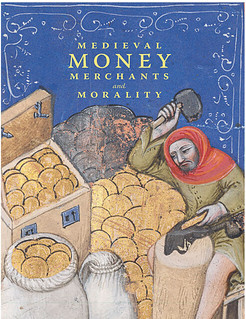 Medieval Money, Merchants, and Morality
Medieval Money, Merchants, and Morality
Diane Wolfthal, with Steven A. Epstein, David Yoon, and Deirdre Jackson
2023
232 pages
8 x 10 inches
Hardcover
$44.95
A vibrantly illustrated, interdisciplinary volume that explores how art reflected and reinforced the complex ethical discussions that developed from the widespread role of money in the Middle Ages
The rise of the monetary economy transformed every aspect of medieval Europe, including its values and culture. Published on the occasion of an exhibition at the Morgan Library & Museum from November 10, 2023 to March 10, 2024, Medieval Money, Merchants, and Morality is a timely look at the economic revolution that took place in the late Middle Ages and early Renaissance. It traces the origins of global money, and surveys economic history, focusing on the environment, the plague, Jews, and institutions. The iconography, minting, and foreign exchange of coins are examined, and the choice that Christians faced is investigated: Should they save their money or their soul? The authors explore images of avarice, the greedy punished in hell, and immoral ways to earn and spend money, and analyze representations of charity and voluntary poverty. Final chapters examine the material culture of the monetary economy—from an illuminated oath for minters to purses and lockboxes—and images of medieval money management.
Published by the Morgan Library & Museum in association with D Giles Limited
For more information, or to order, see:
Medieval Money, Merchants, and Morality
(https://www.themorgan.org/shop/medieval-money-merchants-and-morality)
NEW BOOK: MODERN WORLD COINS, 15TH EDITION
Whitman has published a new 15th edition of the classic A Catalog of Modern World Coins, 1850–1964. -Editor
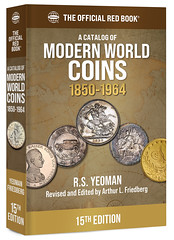 Whitman Publishing announces the release of the 15th edition of A Catalog of Modern World Coins, 1850–1964, by R.S. Yeoman, edited by Arthur L. Friedberg. The 544-page book is available nationwide as of October 2023, in bookstores and online.
Whitman Publishing announces the release of the 15th edition of A Catalog of Modern World Coins, 1850–1964, by R.S. Yeoman, edited by Arthur L. Friedberg. The 544-page book is available nationwide as of October 2023, in bookstores and online.
The revised and edited 15th edition features retail valuations by coin type for 300 nations and states, in up to four grade levels. Editor Arthur Friedberg and his team of experts from around the globe provide an accurate snapshot of the exciting market for more than 11,000 world coins.
The 1st edition of the Catalog of Modern World Coins was published in 1957 (at which time it listed coins from 1850 to 1955). Collectors quickly nicknamed it the Brown Book,
after its cover color—similar to the Red Book,
as author R.S. Yeoman's Guide Book of United States Coins was popularly known.
Modern World Coins is an introductory coin book, a framework for organizing a collection of coins of the world by type or design. The editors have made every effort to illustrate as many coin types as possible. The book contains more than 7,300 actual-size coin photographs to aid in identification.
Coins are listed chronologically by nation, and grouped by metallic content, design, and denomination. Average retail values are shown for each type and denomination, in multiple grades. In addition, a substantial number of rare dates that sell for higher premiums are shown separately, just beneath their respective type-listing charts. Similarly, prices are given for nearly 800 Proof coins and Proof sets.
Modern World Coins is useful for beginner and advanced collectors as a handy source of information to supplement more complex books that list all dates, mints, and varieties. Friedberg, who has edited the book since the 1980s, says, I have always enjoyed using the Catalog of Modern World Coins. The period of 1850 to 1964 is where you find the greatest concentration of collecting interest for world coins. There is a strong demand for a reasonably priced book that gives collectors all the information they need in a portable format that's more concise than the larger telephone-book–sized references.
Dozens of specialist dealers, collectors, researchers, and historians contributed their time and knowledge to make the 15th edition the most comprehensive and accurate to date.
One major upgrade in the 15th edition is the arrangement of the gross weights, finenesses, and net metal contents of every country's silver and gold coins, 1850 to 1964, in both grams and troy ounces. In past editions these data, compiled in great detail by numismatic researcher Holland Wallace, were gathered in an appendix. In the 15th edition, this information was moved to each country's catalog listing, for more convenient access. In almost every case these coin weights and finenesses are from official sources such as mint reports and other government publications.
Other major changes in the 15th edition include reorganization of the Canadian provinces, which are now listed under their own names (while cross-referenced under Canada
); substantial reorganization of the coinage of China; and expansion of the listings for Colombia. Throughout, the typography of the book has been updated for improved readability.
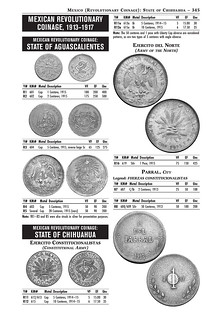 As in prior editions, Modern World Coins includes coverage of 25 German princely states, free cities, and other independent bodies that issued their own coinage, from the Grand Duchy of Anhalt to the Kingdom of Wurttemberg. It also covers the coinage of 56 Indian princely states, from Alwar to Travancore, and 10 Mexican Revolutionary states, from Aguascalientes to Sinaloa. Medals, patterns, and tokens are generally excluded, but bullion issues are included for some of the popular series.
As in prior editions, Modern World Coins includes coverage of 25 German princely states, free cities, and other independent bodies that issued their own coinage, from the Grand Duchy of Anhalt to the Kingdom of Wurttemberg. It also covers the coinage of 56 Indian princely states, from Alwar to Travancore, and 10 Mexican Revolutionary states, from Aguascalientes to Sinaloa. Medals, patterns, and tokens are generally excluded, but bullion issues are included for some of the popular series.
For researchers, the 15th edition includes an appendix of the coinage standards of the Latin (1865–1926) and Scandinavian (1874–1958) Monetary Unions; an alphabetical listing of world coin denominations, from the abbasi of Afghanistan to the Polish zloty; and an index for ease of looking up information.
R.S. Yeoman, the book's original author, wrote about the appeal of world coins in 1984: There are dozens of different ways that you can collect foreign coins. You can select gold coins of the world; crown-size coins (approximately U.S. silver-dollar size) from various countries; type coins of a particular country; commemorative coins; a single coin from each country; all types of coins from a single country or group of countries; or coins of a different variety or design—for example, coins with fishes on them, or coins with foreign rulers. As you get into it, you can view and consider many other areas.
He pointed out that most foreign coins are not collected by date and mintmark, the way American coins are, but rather by type. It is for this reason that the [Yeoman and Krause-Mishler] numbering systems in this book are so useful. This is how most coins have been collected for years.
This handy volume is perfect for today's world-coin hobby,
says Whitman publisher Dennis Tucker. He describes the book as small enough to easily hold, carry, and read, but packed with useful photos, data, and valuations.
About the Editor
Arthur L. Friedberg has been a professional numismatist for more than 40 years. His firm, The Coin & Currency Institute, started by his father Robert Friedberg and now co-owned with his brother Ira, is a founding member of the elite International Association of Professional Numismatists (IAPN, established 1951). Friedberg was the first American elected president of the Association (in 2001). He is a life member of the American Numismatic Association and has been a member of the prestigious Professional Numismatists Guild since 1977. Among other works, he is coauthor, with Ira, of both the revised Gold Coins of the World and Paper Money of the United States, a contributor to the Standard Catalog of World Coins, a contributor to The Numismatist (journal of the ANA), and coauthor of Whitman Publishing's Guide Book of United States Paper Money. He has been a numismatic consultant to the United Nations and the U.S. government, and in 1999 was awarded the Swiss Vrenelli Prize for outstanding contributions to numismatics.
A Catalog of Modern World Coins, 1850–1964, 15th edition.
By R.S. Yeoman; revised and edited by Arthur L. Friedberg.
544 pages, black-and-white. Softcover.
ISBN 0794848346.
Retail $29.95.
URL:
https://whitman.com/modern-world-coins-1850-1964-15th-edition/
NEW BOOK: NUMISMATICS OF THE BORDERLAND
Jason Elwell, President of the International Coin Club of El Paso Inc. has published a new book on the numismatics of the U.S. - Mexico border region. Congratulations. Here's the announcement. -Editor
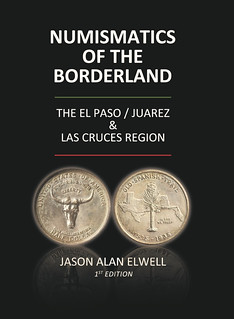 A new book cataloging the numismatics of the U.S. / Mexico border is now available to the public.
A new book cataloging the numismatics of the U.S. / Mexico border is now available to the public. Numismatics of the Borderland: The El Paso / Juarez & Las Cruces Region 1st Edition
by Jason Alan Elwell is a comprehensive literary approach that tells the story of where two countries and three states meet and their shared numismatic history.
Within the 220 pages of this hardback book, over 950 images can be viewed. All numismatic items have unique identification numbers, specifications, and descriptions. All listed items are documented with actual-sized / full-color imagery set in high resolution (unless otherwise noted). Also featured within this book are historical photographs and documents that help the reader better understand the context of borderland numismatics.
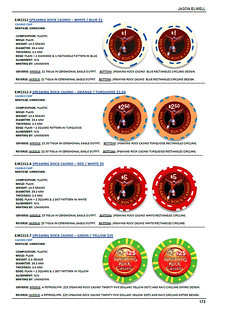 Initially, this book started as a way to catalog over half a century of International Coin Club of El
Paso, Inc. numismatics, but the author soon realized there was a greater need to document many other borderland-related items that are seemingly unknown to the outside numismatic community. While the meat and potatoes of
Initially, this book started as a way to catalog over half a century of International Coin Club of El
Paso, Inc. numismatics, but the author soon realized there was a greater need to document many other borderland-related items that are seemingly unknown to the outside numismatic community. While the meat and potatoes of Numismatics of the Borderland: The El Paso / Juarez & Las Cruces Region 1st Edition
is about El Paso, Texas, some of these items easily cross-reference into Juarez and Las Cruces. It is with the author's hope that all who pick up a copy of this book will learn about the borderland.
For those interested in a copy of this 220-page, full-color, hardback book, please email the publisher, Almost AU: Coins, Currency and More at: almostaucoins@gmail.com and ask how to order. Books are $74.95 each. Domestic shipping is $15. International rates will vary.
NEWMAN PORTAL SCANS TAYLOR PLATES
The latest addition to the Newman Numismatic Portal is an oversize edition of the Frederick Taylor colonial coin auction photographic plates. Project Coordinator Len Augsburger provided the following report. -Editor
Newman Portal Scans Taylor Plates from SNS Library
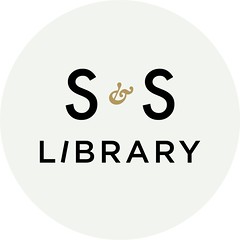 The Taylor plates, published in conjunction with Bowers & Merena's sale of the Frederick Taylor colonial coins in March 1987, featured hundreds of state coppers illustrated on 23 photographic plates. State of the art for the time, these photographs, in conjunction with today's digitization capabilities, remain remarkably competitive with current digital reproduction technology. Newman Portal recently scanned an oversize edition of the Taylor plates from the SNS Library, one of only a few copies produced, from the same negatives used for the regular edition (of which 182 numbered examples were distributed).
The Taylor plates, published in conjunction with Bowers & Merena's sale of the Frederick Taylor colonial coins in March 1987, featured hundreds of state coppers illustrated on 23 photographic plates. State of the art for the time, these photographs, in conjunction with today's digitization capabilities, remain remarkably competitive with current digital reproduction technology. Newman Portal recently scanned an oversize edition of the Taylor plates from the SNS Library, one of only a few copies produced, from the same negatives used for the regular edition (of which 182 numbered examples were distributed).
This is a good place to mention that the NNP viewer is optimized for speed, and that higher-resolution images are further available for more detailed study. In this case, NNP produced .tiff files for each plate, which are about 100 Mbytes each. Download speeds will not be instantaneous (a single image may require a couple minutes depending on connection speed), but these files will easily suffice for print reproduction or more involved die variety studies. To access the .tiff files, select show all
in the right column, then view content
to the right of images.zip.
Image: Extract from Taylor plate no. 11, 1786 Connecticut copper, M 5.6-M
Link to the Taylor plates:
https://archive.org/details/1987largefolioeditionphotoplat
To read the earlier E-Sylum article, see:
NNP TO DIGITIZE LITERATURE OF ANCIENT NUMISMATICS
(https://www.coinbooks.org/v26/esylum_v26n39a09.html)
VIDEO: DOUBLED DIES ON COINS
The David Lisot Video Library on the Newman Numismatic Portal can be found at:
https://nnp.wustl.edu/library/multimediadetail/522852
We highlight one of his videos each week in The E-Sylum. Here's one from 2017 about Doubled Dies on Coins. -Editor
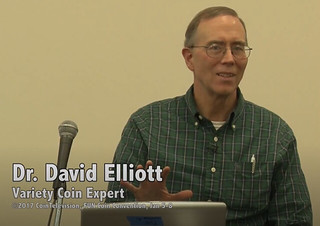 Dr. Elliott has addressed several previous FUN conventions. This time he turns to the issue of doubled dies. Is YOUR COIN really a doubled die? Or is it a coin that APPEARS to be a doubled die but is actually something else? Dr. Elliott?s program will answer this and other error/variety questions that collectors may have. Speaker: Dr. David Elliott. Running time: 40:46.
Dr. Elliott has addressed several previous FUN conventions. This time he turns to the issue of doubled dies. Is YOUR COIN really a doubled die? Or is it a coin that APPEARS to be a doubled die but is actually something else? Dr. Elliott?s program will answer this and other error/variety questions that collectors may have. Speaker: Dr. David Elliott. Running time: 40:46.
To watch the complete video, see:
https://nnp.wustl.edu/library/book/540303
THE VAN WART ANDRE CAPTURED MEDAL
An auction lot description we quoted last week stated that "The Van Wart medal has not been traced into modern times.". As we noted, that's no longer true. To make this more widely known, here's a republication of two articles from July on the topic. -Editor
A rare early U.S. military medal connected to the treason of Benedict Arnold has been donated to the New York State Museum. Thanks to Stephen Searle and Arthur Shippee for passing along this New York Times article. Here's an excerpt - see the complete article online. -Editor
The American militia men were hidden in the bushes having lunch and playing cards when they heard the horse galloping toward them. Springing from their lookout post near Tarrytown, N.Y., they confronted a stranger who was seemingly in a great hurry.
He was Maj. John André, head of British secret intelligence. But on this day, Sept. 23, 1780, he was disguised as a civilian, John Anderson.
Stuffed in André's boot were papers that laid out how to successfully take the American fort at West Point. He had only received the information two days earlier from Benedict Arnold, the commander of the fort, and André now was riding south in the hope of getting back behind the British lines.
But the militia men, John Paulding, David Williams and Isaac Van Wart, questioned André, realized he was a spy and arrested him. West Point was never attacked, André was later hanged and Arnold, whose name became synonymous with treason, fled.
The medal awarded the three militiamen in 1780 was made of silver. On one side it carried the Latin words Vincit Amor Patriae,
or Love of Country Conquers.
Paulding, Williams, and Van Wart were recognized by the Continental Congress with hand-wrought, silver military medals, now considered to be the first ever awarded to American soldiers. Two of the three were stolen from the New-York Historical Society in 1975. But the third, held by the Van Wart family for more than two centuries, has now been given to the New York State Museum in Albany, where it will go on display this fall.
As the only one of the three out there, it's such a unique medal,
said Sara Mascia, the executive director of The Historical Society of Sleepy Hollow and Tarrytown. It's invaluable. I don't think you could put a number on it.
After Van Wart died in 1828, the medal was passed down in his family until it reached Rae Faith Van Wart Robinson, a descendant living in White Plains. It became her prized possession, and until she died in 2020, she kept it in a shoe box under her bed, taking it out occasionally to display at events hosted by the historical society.
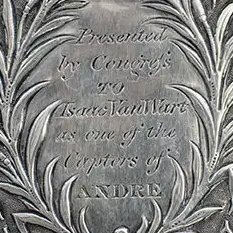
It was the one thing she cared about,
said Henry Neale, the lawyer representing the executor of her estate.
Neale donated the medal to the New York State Museum in February, based on Robinson's wishes that it be given to a museum where it could be seen by the world.
If Washington and the American patriots had lost West Point, we would have lost our independence,
said Cole Jones, associate professor of history at Purdue University.
To read the complete article, see:
He Foiled Benedict Arnold. His Medal Is Now Out From Under the Bed.
(https://www.nytimes.com/2023/07/21/arts/benedict-arnold-medal-west-point-andre.html)
Julia Casey writes:
"Wow!! I have been tracing that Van Wart Andre Captured medal for months! I'm so happy it is going to the NYS Museum where I will try to see it. I found the woman who had it and wrote to one of her family members but I never heard back."
Julia provided the above newspaper article from February 20, 1990 where donor Rae Faith Robinson is shown with her great-great-great-grandfather's medal. Thanks! Below is the medal, now at the New York State museum. -Editor
To read the earlier E-Sylum articles, see:
MUSEUM ACQUIRES VINCIT AMOR PATRIAE MEDAL
(https://www.coinbooks.org/v26/esylum_v26n30a12.html)
NOTES FROM E-SYLUM READERS: JULY 30, 2023 :
More on the Van Wart Andre Captured Medal
(https://www.coinbooks.org/v26/esylum_v26n31a13.html)
WYATT COPY OF MAJOR ANDRE MEDAL OFFERED
(https://www.coinbooks.org/v26/esylum_v26n42a28.html)
NOTES FROM E-SYLUM READERS: OCTOBER 22, 2023
The Economy of British America, 1607-1789
Jeff Rock writes:
"You should include the full title of John McCusker's book to make it easier for people to find - The Economy of British America, 1607-1789. Despite being written by a distinguished professor of history and economics, it is a very approachable book, not dense in theory or language; and with much information that will be new to numismatists (new-mismatists?)."
Thank you! -Editor
To read the earlier E-Sylum article, see:
NOTES FROM E-SYLUM READERS: OCTOBER 15, 2023 : Review: The Economy of Colonial America
(https://www.coinbooks.org/v26/esylum_v26n42a13.html)
The Most Boring Person He'd Ever Met
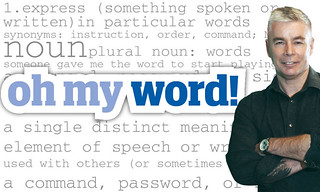 Regarding columnist Steve Finan's "numismatic small talk" article,
Brad Karoleff writes:
Regarding columnist Steve Finan's "numismatic small talk" article,
Brad Karoleff writes:
"I think I just found a friend!
"Meeting Mr. Finan would be a pleasure as I would bore him with numismatics only AFTER discussing Man U!"
To read the earlier E-Sylum article, see:
NUMISMATIC SMALL TALK
(https://www.coinbooks.org/v26/esylum_v26n42a32.html)
More On Dealer Ethics
Scott Semans writes:
"The traveling bullion buyer lowball offers are well known and have nothing to do with the Fang mask situation, except that there may be mitigating facts when considering dealer profits. Traveling buyers have to pay for travel expenses and hotel, and hire a big tough guy to stand at the door. Even a top-name retail numismatic firm, if such engaged in this type of business, could send a buyer who knew not much more than how to test bullion. Without time or resources to check numismatic
coins for authenticity and sales records, the offers could be lower than if the seller were at a coin shop or even a show. But yes, 5-8¢ on the dollar does not speak well for the firms involved!"
See the article about a New Zealand auction house elsewhere in this issue for another take on dealer ethics. -Editor
To read the earlier E-Sylum article, see:
NOTES FROM E-SYLUM READERS: OCTOBER 15, 2023 : On Dealer Ethics
(https://www.coinbooks.org/v26/esylum_v26n42a13.html)
What To Buy First?
Ted Puls writes:
"I never thought about this this way before, but your article about the person buying hoards then studying them, and then buying the book about them. Many new numismatists find something odd and learn about the coin and its story and sometimes its extraordinary value. This leads down the long road of a life of numismatics and maybe buying the book. I love buying a hoard then studying the content and studying the book about them. This is a very exciting way to collect but only if the cost is low. The better healed collector buying very expensive items, requires the book first maybe, but has less fun I feel. How could someone reading about Bibliomania ever think such a way?"
To read the earlier E-Sylum article, see:
NOTES FROM E-SYLUM READERS: OCTOBER 15, 2023 : On the Numismatic Proof Scale
(https://www.coinbooks.org/v26/esylum_v26n42a13.html)
Book Review: British Celtic Coins
In her Newsletter #210 published earlier today, Shanna Schmidt writes:
 "Book Recommendation:
"Book Recommendation:
British Celtic Coins Art or Imitation? An introduction to the coins of pre-Roman Britain by Tim Wright
"It isn't everyday that a client of mine writes a book about coinage. Usually I am the one to recommend books for clients. I am thrilled to announce a handy new book which gives a glimpse into British Celtic coinage through the eyes of Tim Wright. I really enjoyed the book and Tim's perspective on this interesting coinage. Speaking of Celtic coinage, I'm convinced that artists like Picasso were heavily influenced by the Celtic coinage coming from the European continent."
I've wondered myself if the stylistic similarities were evidence of influence or just coincidence. Interesting thought. Who can send us a side-by-side comparison of say, a portrait or horse on a Celtic coin and a similar Picasso painting or drawing? -Editor
To read the earlier E-Sylum article, see:
NEW BOOK: BRITISH CELTIC COINS
(https://www.coinbooks.org/v26/esylum_v26n40a04.html)
The Buffalo Nickel as a Milestone of American History
Harry Waterson writes:
"Last Monday and Tuesday PBS aired a two-part Ken Burns documentary on The American Buffalo and its ties to The American Experience. Part II, called Into The Storm recounts the Bison's slow struggle back from near extermination as a species. One of the markers Ken Burns used to document that struggle is the 1913 Buffalo Nickel by James Earle Fraser. The narrator, Peter Coyote, said that Fraser wanted to produce a coin that was totally American and could not be confused with the coinage of any other country. Fraser not only succeeded in that endeavor but he created a milestone in the resuscitation of the Bison back into the fabric of American life. Still an ongoing effort and well worth our support and good will."
Absolutely. Good point. Thanks. -Editor
Fort Davis Military Outpost Token
"Well sometimes grinding through the nothingness at the bottom of a box of stuff one finds a diamond, found this super rare item in the bottom of a box of junk at 1am. This will bring a smile to the consignor for certain!
"A new discovery, and now the highest reported denomination Nome, Alaska Fort Davis Military Outpost $1 Good For Token, countermarked H
during it's use in Company H of the 10th Infantry stationed there to keep law and order at the turn of the century. Kind of a cool find that will get all the token and Gold Rush guys shorts into a stir… I would personally rather own this than any silver Mike Tyson stickered chit in an NGC slab… when you figure this was used by the same infantry who fought multiple battles in the Civil War and went on to fight in the Indian Wars, then off to Nome to bring the rule of law to the Gold Rush frontier town in all its craziness. Bet this was a rough lot of dudes using this sucker!"
Nice find! Very cool item. -Editor
Query: Is This Token From Argentina?
Julia Casey writes:
"Does anyone have information about this token? EL PROVEEDOR DE LAS FAMILIAS (The Family Provider), with a value of 5. It is uniface, copper, and about 23mm & 3.7g. I found a "snippet" on Google Books from Pulperías, esquinas y almacenes de la campaña bonaerense historia y tradición · Part 2, By Carlos Antonio Moncaut · 2000 (Grocery stores, corners and warehouses of the Buenos Aires countryside, history and tradition), which mentions a store by this name was run by Martin J. Alustiza in Arrecifes, Argentina. However, I don't know if this token is from this store as I have not been able to find any information on it and the Moncaut book is very difficult to find."
Can anyone help? -Editor
THE BOOK BAZARRE
a dazzling memoir by the world's most venerated rare-manuscript dealer and document collector. Every page of this adventure book sparkles with wisdom. A must read!Order your copy online (including at Whitman.com ), or call 1-800-546-2995.
SEMIQUINCENTENNIAL DOLLAR DESIGN IDEAS
Wayne Pearson submitted these design ideas for dollar coins commemorating the 2026 semiquincentennial of U.S. independence. Thanks - what do people think? What other concepts would you suggest? -Editor
DOLLARS.—The Secretary may, in addition to the coins produced under subsections (r) and (w), mint for issuance during the one-year period beginning January 1, 2026, $1 dollar coins with designs emblematic of the United States semiquincentennial.
Based on this 1976 Frank Gasparro medal. 13 stars are larger.
Inspired by the 1976 Margaret Grigor quarter. 1904 Louisiana purchase medal by A.A. Weinman. Dolphins = Atlantic & Pacific oceans.
Based on this Delaware state quarter pattern set against England's Union Jack. Liberty writing from 2015 HR-O-19-C pattern
I've always thought this Delaware quarter design was underappreciated. It's a great way to incorporate the state outline that boosters prefer without letting it overwhelm the design. Not sure I care for the Union Jack background - I think the HR-O-19-C design has a lot going for it. -Editor
Based on the Presidential medal, and the 1932 Thomas Cremona ‘the Quarter that never was'.
While symbolic images are always much preferable to plain text, the bold "1776" date is far more understandable than "semiquincentennial." -Editor
Based on this Michael Lantz design from 1976
Liberty & Flag Joel Iskowitz /Phebe Hemphill
Very clever - although this doesn't quite work for me I do appreciate the symmetry of "Liberty" vs. "Tyranny" and how the ending "y"s make for sword points and the beginning "L" and "T" as sword handles. Might work better if the words were placed on actual swords - the separate letters look odd and nonthreatening. "Taxation without representation" may be a more historically accurate foe than "Tyranny", but it makes a catchier slogan. -Editor
Wayne Pearson adds:
"I tried putting the words into the swords, but by the time they get reduced to size there is no way the words would be seen-too small."
Interesting juxtaposition of "Old World" and "New World" Georges. -Editor
I like the choice of perspective - looking upward toward the Liberty Bell. -Editor
Some of my designs are based on other designer's concepts. With that in mind, any designer's work I've used to illustrate my ideas, living or dead, should have their initials placed on these 2026 coins. There are some ideas that are just too good to be delegated to a medal, or a noncirculating coin, that the average person will never see.
To read the earlier E-Sylum articles, see:
2026 INDEPENDENCE COMMEMORATIVE IDEAS
(https://www.coinbooks.org/v24/esylum_v24n34a14.html)
MORE 2026 INDEPENDENCE COMMEMORATIVE IDEAS
(https://www.coinbooks.org/v25/esylum_v25n37a13.html)
AI-GENERATED NUMISMATIC CRAPOLA
In an email with the subject line "Let's hear it for AI," Dick Hanscom writes:
"There is just so much bad information and fiction in this article: "10 American Coins That Were Once Worth Thousands and Are Now Worth Nothing (msn.com)"
"The last sentence says it all:
Editor's note: This article was produced via automated technology and then fine-tuned and verified for accuracy by a member of GOBankingRates' editorial team"
It's a shame to learn that 1913 Liberty Nickels aren't worth anything anymore. Might as well spend mine... Apparently 1900s silver dollars, the 1964 Peace dollar, private gold tokens, and Confederate States of America coins have greatly declined in value, too. Better click on that "5 Best Places To Sell Rare Coins and Paper Money" link before my collection of these drops further... (That one turns out to be a decent article actually, mentioning Heritage, Stack's Bowers, eBay and local dealers).
You knew this was coming, right? But hopefully not to any mainstream numismatic publication worth its salt. "Verified for accuracy" is clearly a lie, and as a link farm any "fine-tuning" was likely limited to evaluating the popularity of keywords enticing people to click. I stay away from these clickbait headlines for the most part, but they do provide occasional amusement.
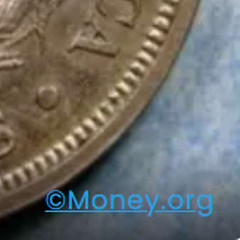 So where do they get their content? Likely from all over the open web. In this case, it might have helped to at least limit training data to mainstream numismatic publications. But this site only cares about numismatics for its clickbait content. It apparently does scrape the American Numismatic Association website - that nickel image includes a machine-generated string "©Money.org". But there's no actual link to the ANA site and no citation of the actual page sourced - the image caption is "Screenshot 2023-08-30 092723"
-Editor
So where do they get their content? Likely from all over the open web. In this case, it might have helped to at least limit training data to mainstream numismatic publications. But this site only cares about numismatics for its clickbait content. It apparently does scrape the American Numismatic Association website - that nickel image includes a machine-generated string "©Money.org". But there's no actual link to the ANA site and no citation of the actual page sourced - the image caption is "Screenshot 2023-08-30 092723"
-Editor
To read the complete article (brace yourself for number six!), see:
10 American Coins That Were Once Worth Thousands and Are Now Worth Nothing
(https://www.msn.com/en-us/money/savingandinvesting/10-american-coins-that-were-once-worth-thousands-and-are-now-worth-nothing/ar-AA1iCKOT)
BUYER BEWARE: FAKE COINS AND BULLION
Speaking of fakes, an auction house using weaselly-worded lot descriptions is getting away with selling fake coins and bullion pieces online, according to an article in the New Zealand Herald. Here's an excerpt - see the complete article online. -Editor
A small auction house has been accused of selling fake rare coins and bullions which has drawn the ire of numismatists around the country. However, a tribunal has ruled it can't stop the auction house from selling fakes and that it's up to the buyer to do their due diligence. Jeremy Wilkinson investigates.
Lipscombe Auction House in Nelson sells hundreds of rare coins per year, specimens that would go for thousands if they were genuine.
But some of them aren't real, as one buyer who spent nearly $8000 on various coins and supposedly silver bullions found out.
A Disputes Tribunal decision released early this year describes how one man paid $6000 for some coins and sent them away to get tested for silver content.
While he was waiting on the results he spent a further $1500 on coins and bullions from Lipscombe only for the results of the first batch to come back with a disappointing result.
They were all fakes.
The buyer refused to complete the pending sale of $1500. He contended the first lot he'd purchased and tested was essentially worthless so he believed it was likely the second lot was the same.
Lipscombe then took him to the tribunal and won, meaning the man has to complete the sale. The adjudicator also dismissed the buyer's counterclaim for a refund of the first $6000.
It's a move that's got other auctioneers of rare goods and buyers of rare coins talking but experts say the auction house is not doing anything illegal.
One of the country's leading legal experts in consumer and intellectual property law, Ian Finch, says Lipscombe wasn't doing anything illegal.
Having looked at Lipscombe's terms and conditions as well as its auction descriptions, Finch said he believed the auction house wasn't taking personal responsibility for the product
.
He believed its wording was quite glib
, which provided a legal out for the auctioneer in not making any promises about the authenticity of the product.
They are basically face-value descriptions,
Finch said.
Lipscombe Auction House has its terms and conditions listed on its website which state that it's not liable for any error whatsoever to do with the condition, state, size, quality or quantity
of anything it lists.
Its descriptions do not state any coin is genuine and are merely descriptions of the coins or what is written on them, such as: USA Silver Coins x 4" and
Australian 1937 Crown
and 1925 USA Half Dollar
to name a few.
It was these descriptions that Disputes Tribunal adjudicator Dolly Brennan zeroed in on when she made her ruling that the buyer was obligated to complete the second purchase despite already having spent thousands on fakes.
Brennan ruled that many of the coins and ingots were not described specifically as having a silver content though the word silver was used in the auction listing.
Using the word ‘silver' in this context is descriptive of the face of the item being described rather than a representation that it is made of silver or regarding its quality or authenticity,
she said.
The buyer argued that using the word silver conveys to a reasonable person that it would contain the precious metal rather than it simply being a description of how the item looked. Brennan disagreed.
The buyer also argued that the descriptions of the coins denote a specific year which was indicative of their being minted in a particular era. Brennan ruled that Lipscombe was merely describing what was written on the coin.
As well as the coins, the buyer purchased a series of silver ingots which were described as .999 fine silver
. These turned out to be only silver-plated.
She also ruled that according to Lipscombe's terms and conditions, it will only grant a refund for a fake if they have specifically made a claim about the genuineness of the product.
Brennan acknowledged that the buyer would be disappointed with her ruling and was very upset
that Lipscombe appeared to be continuing to sell coins and ingots similar to the fakes he'd purchased.
However, the tribunal has no jurisdiction to prevent [Lipscombe] continuing to sell such items,
she said.
To read the complete article, see:
Buyer beware: Lipscombe Auction House selling fake rare coins can't be stopped
(https://www.nzherald.co.nz/nz/buyer-beware-lipscombe-auction-house-selling-fake-rare-coins-cant-be-stopped/H6ZJEZPU2FB2PBS4OE34LCYTWU/)
EXHIBIT: MEDIEVAL MONEY AT THE MORGAN
Arthur Shippee passed along this New York Times article about a new exhibit on money opening November 10th at the Morgan Library and Museum. Here's an excerpt - see the complete article online. An article elsewhere in this issue discusses the accompanying book. -Editor
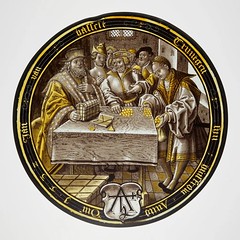 Is it ironic that the Morgan Library and Museum is opening an ambitious exhibition about money in the Middle Ages?
Is it ironic that the Morgan Library and Museum is opening an ambitious exhibition about money in the Middle Ages?
Maybe, maybe not. Suitable
was the word that Deirdre Jackson used. She is the on-site curator of Medieval Money, Merchants, and Morality,
an exhibition that follows the rise of the monetary economy in the late Middle Ages and the early Renaissance, long before J. Pierpont Morgan helped to cement the foundations of modern America's financial infrastructure.
It looks at the ways that money redefined life, culture and politics in medieval Europe. The sound of money even worked its way into music: A 14th-century madrigal by Lorenzo Masini mimicked clinking coins.
And the themes that took root then are as relevant as ever,
the Morgan's director, Colin B. Bailey, wrote in the exhibition catalog, as people today reflect on fluctuating markets, disparities in wealth, personal values and morality.
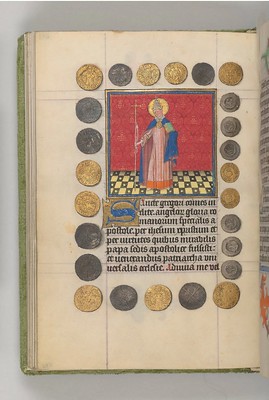 The exhibition gave the curators — Diane Wolfthal, a professor emerita at Rice University, and Dr. Jackson — an opportunity to rethink some of the Morgan's prized holdings, including illuminated manuscripts like
The exhibition gave the curators — Diane Wolfthal, a professor emerita at Rice University, and Dr. Jackson — an opportunity to rethink some of the Morgan's prized holdings, including illuminated manuscripts like The Hours of Henry VIII
and the Prayer Book of Claude de France.
The interesting thing about money is it hits everything in society,
Dr. Jackson said. Poverty was widespread in the Middle Ages even as most people, even the poor,
were caught up in the new monetary economy, Dr. Jackson said. Famines, which were common in medieval Europe, would have hit the poorest people the hardest,
she said.
Simultaneously, the foundations of banks were being laid, and new financial instruments were coming into being that let people pay for merchandise without metal coins. It's a lot easier to have pieces of paper than big pieces of metal to finance your business dealings,
Dr. Jackson said.
But coins were pervasive, and to show what was in medieval money chests and brass alms boxes, the curators placed a clump of coins as the first item visitors will see.
Medieval Money
also displays gold ducats, coins with images of Ferdinand and Isabella of Spain minted in Castile in the late 15th or early 16th centuries. By then there was nothing new about coins: The earliest ones found outside of China were discovered in the ruins of a Greek temple in Lydia, in what is now Turkey.
But as people started making more money in the Middle Ages, it was the spread of low-value coinage that allowed more people — and more classes of people — to participate in the economy. Now there were bankers, money changers, pawnbrokers and traders who reached beyond their immediate surroundings. Financial centers brought in outsiders: Italian merchants who did business at the Beurse, or stock exchange, in Bruges lived in an expatriate community in that Flemish city.
And as the new commercial economy spread, people started to worry about the ethical and religious ramifications of getting rich, because wealth seemed to contradict the Christian ideals of poverty and charity.
In a book published to accompany the exhibition, Dr. Wolfthal writes that merchant bankers in the 14th and 15th centuries were plagued by anxiety about some of their business practices.
She also noted that as late as the 16th century, Martin Luther declared that trade can be nothing but robbing and stealing the property of others.
To read the complete article, see:
The Good, and Evil, of Money at the Morgan
(https://www.nytimes.com/2023/10/19/arts/design/money-morgan-library-exhibition.html)
For more information, see:
Medieval Money, Merchants, and Morality
(https://www.themorgan.org/exhibitions/medieval-money)
VOCABULARY TERM: OPENWORK
Here's another entry from Dick Johnson's Encyclopedia of Coin and Medal Terminology. I added some images. -Editor
Openwork. A pierced coin or medal, with an opening made as part of its artistic design, or cut out at a later time. Coins are found with square or round holes in the center, with little other openwork design. Openwork medals are somewhat more artistic in that the open area is usually not in the center but appears elsewhere in the design, as part of the artistic expression. All openwork is cut entirely through the item forming the most severe treatment and allowing showthrough with a view of any thing placed behind it.
Sometimes the background or some portion of the field is pierced out to give emphasis to the device. Many of the higher ranked decorations are pierced to give them this element of device emphasis and because this is so rarely done – because of the high cost – it gives these decorations an exclusiveness in the medallic field.
As a design element openwork must be worked into both obverse and reverse design. Like statues and other sculpture in-the-round, openwork is also considered as NEGATIVE SPACE, that is, the space is not filled with matrix (the metal) or design. Because of this removal, openwork is similar to silhouetting in three ways: the matrix is removed, the outlining gives it a hard edge,
to the design and permits showthrough of anything behind the item. Silhouetting is the cutting around the edge, while openwork is the cutting out entirely within the object. See silhouette.
Openwork created by the designer of the item is considered legitimate and what was intended. Openwork that is done after the numismatic item has been issued is considered by some people as the most egregious form of graffiti. Examples include both cutout coins and medals to create a form of numismatic jewelry. The cutout Columbian Commemorative Half Dollar of 1892-93 illustrated here is perhaps the most notable (or notorious) example depending upon a person's viewpoint.
How openwork is obtained. Openwork on cast objects present no difficulty in their formation. It is just as easy to form an object with openwork by casting as it is a solid object.
However, for struck objects, openwork requires great attention and tooling. Such openwork is produced by any of several ways: (1) pre-forming the blank by piercing the strip stock before the blank is cutout; (2) by piercing as one step in the use of a progressive die (see combination die), (3) by piercing with a piercing die on a separate run through a punch press after the piece is struck; or 4) by handworking with a jewelers saw.
Tooling for piercing is made of the hardest tool steel – drill rod – to effect the pierced opening. In effect, the steel punch pushes the soft metal through the piercing die, a tool with a hard edge surrounding the aperture made to the exact configuration of the required opening. The punch plate holds the punch die and it too has an opening in it (somewhat larger than the aperture in the die). The punch pushes the metal being removed through openings in both of these and it falls below as scrap. See piercing.
Openwork coins and tokens. The early cash coins of China with their square hole in the middle – among the first such numismatic objects with openwork – were created with the square hole for the utilitarian purpose of carrying many coins on a square stick. The casting of the coins provided little difficulty as casting can easily create openwork.
In modern times coins with openwork are struck with combination dies, which with one blow can pierce, blank and emboss the design all in one blow. It is done in stages, at the first position the blank strip is pierced, at the second position the relief design is struck and the third position the piece is blanked out of the strip. The strip moves in a prescribed distance to keep each function in close register.
Tokens, as transportation tokens, with many kinds of openwork centers, are typically struck with combination dies in this manner. An official of Osborne Coining, Charles Stegman, received U.S. patent number 3,338,084 in 1967 for the progressive die to strike, blank and perforate such tokens in one cycle of the press.
Openwork medals. The design dictates where a medal will be pierced and the quantity dictates how it will be pierced. If only a small quantity is required it is cost effective to hand jigsaw the needed pieces. If a large quantity is required (say, over fifty) a piercing tool is created by a tool and diemaker. It includes a punch, a die, a punch holder and a plate; sometimes a nest is also required for a critically designed piece to rest in the exact position to be pierced.
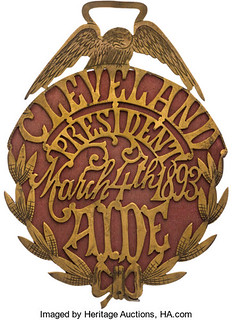 Illustrated is an openwork badge from the Grover Cleveland Inauguration of 1893. The Aide Badge was heavily pierced, the design is chiefly typographic, mostly lettering. A diestruck spread-wing eagle and a separate wreath were affixed to a thin, flat sheet brass that was probably hand jigsawed as the survival quantity of these badges does not indicate a large production. The fabrication brought all the separate elements together.
Illustrated is an openwork badge from the Grover Cleveland Inauguration of 1893. The Aide Badge was heavily pierced, the design is chiefly typographic, mostly lettering. A diestruck spread-wing eagle and a separate wreath were affixed to a thin, flat sheet brass that was probably hand jigsawed as the survival quantity of these badges does not indicate a large production. The fabrication brought all the separate elements together.
A Belgian medal, shows a pierced area – the small window in a prison door – on one side a woman brings food to a prisoner, on the other the prisoner reaching for the food. A more modern piece is an issue of the Society of Medalists showing both beauty and the devil looking into a mirror, the openwork area. See illustrations.
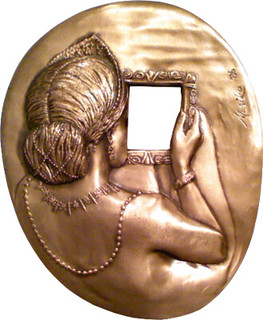
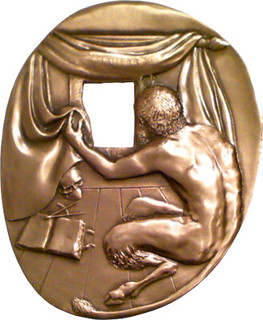
While a hole in a medal for suspension is technically openwork, it is not always so. If the artist intends it to be drilled the designer often includes a limiting guide, as a circle identifying the locus where the hole is to be made. When cataloged such an intended hole is noted as a drill hole. A hole drilled into any numismatic item not intended by the designer is considered vandalized.
Decoration with openwork. Designers of high ranking decorations have employed openwork to the greatest degree. Since elaborate tooling is required for the piercing this process is expensive but it adds the greatest amount of exclusiveness to the piece.
The United States Congressional Medal of Honor has openwork around a central star and within a wreath. This requires not one but two piercing runs because of the closeness of pierced areas to each other.
Cutout coins and medals. Anyone with a jewelers saw, a drill, a vise and a great deal of patience can cut an open area in a coin or medal. Generally a large piece is chosen with a portrait, device or design element that can be recognized after it is cutout. The design remaining must be attached to some portion of the rim (if the central device was entirely cut around it, obviously, it would fall out). In so doing, the entire design on the opposite side is destroyed.
The legend for such a cutout coin is a major problem, in that some cutout items omit this, but if it is cutout a portion of it is left connected to the rim. Columbus portrait on the obverse and his ship on the reverse of the Columbian Commemorative half dollar are excellent examples of cutout coins. See cutout.
Openwork in a coin or medal design that is not pierced – but intended to mean hollowed out – is called voided, the term from heraldry. A French coin, created for circulation in Canada and Louisiana Territory and listed in Breen (278) has a cross on the reverse and is described as a voided cross. It bears an outline of a square-arm cross that is empty of design in the interior, precisely the meaning of voided.
Openwork as the design. In 1930 a Pittsburgh inventor (Ollie S. Letzkus) received a design patent for an openwork item he called a Shadowgraphic Token. It was made of sheet brass with perforated openings, which, when held to a light cast a shadow of a design. His patented design (D83,734) formed the shadow of Christ's head. While an ingenious design, little more was done with his creation.
Openwork also includes filigree – lace-like openwork design – sometimes found on the border to bezels or plaques. The French word for openwork in coins and medals is ajoure. The use of the word perforated
is discouraged in the numismatic field as it does not have the more exact meaning of similar terms listed here.
Reference:
NC12 {1988} Breen, p 48.
To read the complete entry on the Newman Numismatic Portal, see:
Openwork
(https://nnp.wustl.edu/library/dictionarydetail/516425)
THE 1952 LAVERE REDFIELD BURGLARY
E-Sylum Feature Writer and American Numismatic Biographies author Pete Smith submitted this article on the 1952 LaVere Redfield burglary. Thanks! -Editor
Everyone knows (or should) about the Redfield hoard of silver dollars. This week I will report on another sensational chapter in his story that got a lot of publicity at the time.
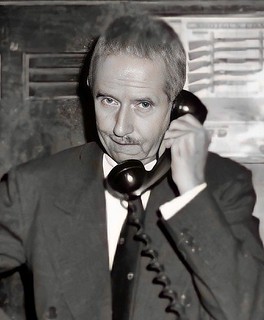 In 1952, LaVere Redfield lived in a fifteen room stone mansion on Mount Rose Street in Reno,
Nevada, with his wife Nell and a Kerry Blue terrier named Mac. They had moved to Nevada in
1935 to take advantage of a state without income tax, corporate tax or inheritance tax.
In 1952, LaVere Redfield lived in a fifteen room stone mansion on Mount Rose Street in Reno,
Nevada, with his wife Nell and a Kerry Blue terrier named Mac. They had moved to Nevada in
1935 to take advantage of a state without income tax, corporate tax or inheritance tax.
Redfield hated the IRS and distrusted banks. He also hated to have his picture taken. He dressed like a common farmer in overalls and a plaid shirt to avoid being recognized as he walked downtown to gamble in the Reno casinos.
Nell and LaVere were away from home when burglars broke into their house around noon on February 29, 1952. They carted off an 18 x 24 x 36 inch green safe that weighed 400-pounds with currency, securities and jewelry initially valued at $2.5 million. Newspapers claimed it was one of the biggest thefts in U. S. history.
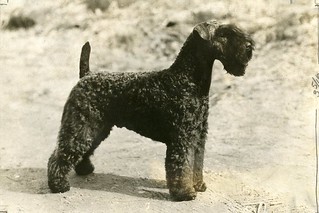 Redfield had an eight-page inventory of 830 banknotes that had been in the safe. These included
two $10,000 bills, 123 $1000 bills, 14 $500 bills, 308 $100 bills, 156 twenties, 84 tens, 57 fives,
and 35 ones. The serial numbers would help solve the case. The securities were negotiable but
included Redfield's name. The jewelry could also be identified. It would be hard to cash in
without drawing attention.
Redfield had an eight-page inventory of 830 banknotes that had been in the safe. These included
two $10,000 bills, 123 $1000 bills, 14 $500 bills, 308 $100 bills, 156 twenties, 84 tens, 57 fives,
and 35 ones. The serial numbers would help solve the case. The securities were negotiable but
included Redfield's name. The jewelry could also be identified. It would be hard to cash in
without drawing attention.
Police jumped into action. On March 2, they issued a bulletin to be on the lookout for five suspects including an attractive 27-year-old blonde and four men with extensive criminal records. They were driving an expensive Cadillac which was a sure sign of guilt.
On March 3, the car was stopped at a roadblock near Butte, Montana, and the suspects were taken into custody. Newspaper coverage was interesting. The woman was described as a willowy blonde 5' 7 tall and weighing 120 pounds. Heights and weights of the men were not given. Some papers carried a photo with her name but did not include names or photos of the men. Their names were published in more than a hundred newspapers around the country.
They were released the following day when it was determined they were being held in jail in
Elko, Nevada, at the time of the burglary. After leaving Butte, they were picked up and held in
Missoula briefly. The woman complained that the newspaper descriptions were a bunch of
hooey.
They got her age wrong, her height wrong, and listed aliases she had never used.
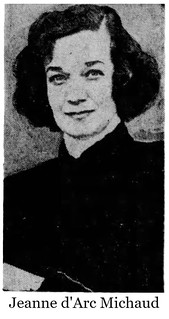 Within two weeks there were eight more suspects in custody. This is a brief review of their
stories which could be expanded to four more full articles in The E-Sylum.
Within two weeks there were eight more suspects in custody. This is a brief review of their
stories which could be expanded to four more full articles in The E-Sylum.
Mrs. Marie Jeanne D'Arc Michaud (36) was a French-Canadian songwriter who married a Connecticut doctor. After a few years they went to Reno for a divorce and she chose to stay. She met Redfield in June 1951 and became a frequent visitor to his house and companion on his visits to a casino. She hatched the plot to rob Redfield. Afterward she took off to California. She was arrested by FBI agents on the California Limited train to Chicago and taken off at Flagstaff, Arizona. With her she had cash, jewelry and securities linked to the burglary. She attempted suicide with sleeping pills while in jail in Flagstaff.
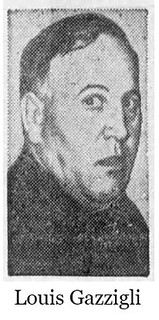 Anthony Gazzigli (41) was a former Reno casino maintenance engineer. Mrs. Michaud offered
him 50% of the take to arrange for the burglary. He explained the plan to Andreas Young and
John Triliegi who came from Milwaukee to pull the heist. On the day of the heist, Mrs. Michaud
came to the Club Cal-Neva casino and signaled the burglars to begin.
Anthony Gazzigli (41) was a former Reno casino maintenance engineer. Mrs. Michaud offered
him 50% of the take to arrange for the burglary. He explained the plan to Andreas Young and
John Triliegi who came from Milwaukee to pull the heist. On the day of the heist, Mrs. Michaud
came to the Club Cal-Neva casino and signaled the burglars to begin.
Young and Triliegi drove to the house in a 1951 Cadillac sedan while Gazzigli parked his pickup truck a few blocks away. The guard dog was distracted with a ham bone while the thieves entered the house. Young was supposed to crack the safe in a few minutes but could not. The thieves took the 400-pound safe away in the back seat of the Cadillac. They took the safe to the Johnson ranch where Anthony's brother, Louis Gazzigli worked. The four men shoved the safe under the ranch house. That evening the men took the safe into the barn and broke into it with a sledge hammer. They counted the money and split it up, giving much of it to Mrs. Michaud. The safe was dumped down an abandoned mine shaft on Redfield property.
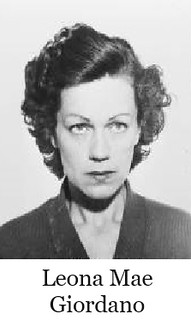 It was not long before a $1000 bill turned up at the Riverside Hotel. It came from what the
papers called a
It was not long before a $1000 bill turned up at the Riverside Hotel. It came from what the
papers called a shapely gambling casino waitress.
Mrs. Leona Mae Giordano (36) initially said
the bill came from a nice man from Milwaukee. Later she admitted that on the morning after the
crime, Andreas Young got drunk and gave some money to her at the Harold's Club in Reno.
When Young was in a fitting room at the Herd and Short clothing store, she helped herself to a
few $1000 bills from an envelope in his jacket. She ran off to Los Angeles and was arrested
there in possession of nine thousand dollar bills and one hundred. She was sentenced to a year
and a day in prison.
John Baptiste Triliegi (37) was a soap salesman with a wife and seven children. He suffered a back injury working in a Milwaukee cement plant and was receiving disability payments. This did not stop him from helping to remove the 400-pound safe from the Redfield residence. He was sentenced to one to five years in prison.
Andreas Robert Young, (46) the incompetent safe-cracker, came from Milwaukee to commit the crime. The FBI identified him as an ex-con who had been sentenced to life in prison in 1939 for a 1927 Wisconsin murder. He was pardoned and released in January 1946. For the Redfield case, he received a sentence of one to five years in prison.
Louis Gazzigli (44) was a bouncer and former professional boxer known as Young Firpo. He received a sentence of one to five years in prison and was granted parole on March 15, 1955.
Benton Henry Robinson (65) was a handyman at the Stardust dude ranch where Mrs. Michoud frequently stayed. FBI agents found $31,731 hidden in a pillow case. He was charged with receiving stolen property and sentenced to four years in prison.
Frank Sorrenti, (36) a door-to-door soap salesman. was held on a federal charge of interstate transportation of stolen property. It was his Cadillac that was used in the heist. He claimed he had no knowledge of the crime. Eventually the charges were dropped for lack of evidence.
With trials pending in June of 1952, and a subpoena to testify as a witness, Redfield went missing. FBI agents issued a warrant for his arrest on June 19. He was taken into custody at Sebastopol, California, and transported to Reno. When given the opportunity to get out on bail. he claimed he would rather stay in jail until trial to avoid lurking photographers.
Mrs. Michaud had an interesting defense at trial. She said there had been no burglary. Redfield had told her she could take the money and make it look like a burglary. They came to an agreement in his bedroom on December 28, 1951. When Redfield was asked at trial if this was true, he was evasive with his response. Despite her claim of innocence, she was convicted and sentenced to five years in prison.
Anthony Gazzigli recruited the burglars and organized the crime. His cooperation with the prosecution was credited for obtaining confessions and convictions. He was given probation.
Most of the loot was recovered. Some of the bills were obsolete large-size bills from the 1920's that would have had a collector value. Today the large denomination bills would also have a collector value. While the story of his silver dollars is well known, the dispersal of his currency is not mentioned.
Photo credits: LaVere Redfield, Reno-Gazette-Journal; Jeanne d'Arc Michaud, The Sacramento Union, June 26, 1952; Gazzigli, Gazzigli, Robinson, Sorrenti, Triliegi, and Young, Sidney Daily News April 8, 1952.
Interesting cast of characters. You just can't make this stuff up. Thanks for pulling the story together.
As Pete notes, higher-denomination Federal Reserve Notes ($500 and $1,000) were just cash at the time, but they are more widely collected today and seem to be enjoying their day in the sun with recent multiple auction appearances of large numbers of notes. Can any of them be traced to the Redfield burglary? -Editor
To read earlier E-Sylum articles, see:
NEW BOOK: LAVERE REDFIELD: SILVER DOLLAR KING
(https://www.coinbooks.org/esylum_v17n47a06.html)
REDFIELD HOARD HOUSE FOR SALE
(https://www.coinbooks.org/v20/esylum_v20n09a13.html)
RON GILLIO INTERVIEW, PART THREE
Greg Bennick's latest interview for the Newman Numismatic Portal is with longtime dealer Ron Gillio. Here's the third of five parts, where Ron discusses antiques and buying U.S. coins in Europe. -Editor
GREG BENNICK: I like it. So, you mentioned Western Coins and Antiques. I know I brought it up slightly out of sequence before. What could you tell us about Western Coin and Antiques?
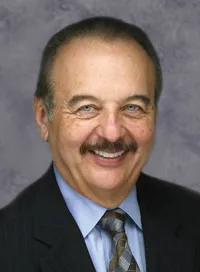 RON GILLIO: Well, I had been going to Santa Barbara for about 10 years before
I opened up in 1971, the store Western Coin Antiques. And it was just a regular coin
store. I mean, it was a regular coin store. I dealt in all facets of coins, coin supplies
for collectors. And then that was kind of the beginning of people investing in coins
and especially in silver. So, I dealt in that. And Santa Barbara is a small town, but
an old town. So, there's a lot of collections that come in my store. And I still travel.
I would go to coin shows almost every other week.
And on Wednesdays, I would go to Coinorama City in Hawthorne, California, which
is a meeting place in the 60s and the 70s. So, it was an interesting business. And I
had some interesting clients that developed into a good business. And I still have the
store in Santa Barbara.
RON GILLIO: Well, I had been going to Santa Barbara for about 10 years before
I opened up in 1971, the store Western Coin Antiques. And it was just a regular coin
store. I mean, it was a regular coin store. I dealt in all facets of coins, coin supplies
for collectors. And then that was kind of the beginning of people investing in coins
and especially in silver. So, I dealt in that. And Santa Barbara is a small town, but
an old town. So, there's a lot of collections that come in my store. And I still travel.
I would go to coin shows almost every other week.
And on Wednesdays, I would go to Coinorama City in Hawthorne, California, which
is a meeting place in the 60s and the 70s. So, it was an interesting business. And I
had some interesting clients that developed into a good business. And I still have the
store in Santa Barbara.
GREG BENNICK: Now, tell me this, the connection with antiques since you haven't brought up Antiques before. Western Coin certainly makes sense. Tell me about your connection to antiques and what was the association there?
RON GILLIO: Well, most of the antiques I dealt in were Western paintings. I dealt in Tiffany lamps, Oriental Persian rugs, and California paintings. But I did it more because I liked it. I'm talking from my house and my whole house is like a museum everybody says when they come over because I like paintings and I like collecting things. I'm still a big collector of all kinds of things. But I didn't really deal that much in antiques, a little bit.
GREG BENNICK: What sort of things do you love to collect? Meaning, if we were in your house right now, what would we predominantly see in terms of your favorite collections of your favorite items? What are the things that you love to collect the most, say?
RON GILLIO: Well, I collect European medals with ships on it and historical U.S medals, gold medals. I like all kinds of medals with different designs on them. I don't have anything really rare, but I like medallions and I like Tiffany lamps. I have some Tiffany lamps and I have California paintings. I have a lot of Western art. So, just a little bit of everything, really.
GREG BENNICK: Great. So, Western Coin and Antiques is running. People are coming in, buying, selling coins, buying, selling these specific types of antiques. Now, throughout your career, and I might have been around this time or shortly thereafter, buying overseas became a huge part of what you do. So, as I understand it, you went to Switzerland first or was it just a general trip to Europe first? How did it come about that you started integrating going to Europe, finding coins, buying coins, and I'm assuming bringing them back to the United States and selling them. But please, enlighten us and let us know the story about going to Europe or, if I'm right, Switzerland the first time to buy coins.
RON GILLIO: Okay. So, yes, that's been a big part of my business. It still is buying
coins in Europe. At this present time, for the last 16 years, I'm a consultant for Stacks
Bowers and I do it for them. It's been working out very well. But to get started, it
was actually Bob Johnson, San Francisco, that kind of introduced me to the
European market because I was buying these 20s. We talked about the two $20s I
bought from, but through the 60s, I continued to buy and sell $20 gold pieces, buying
mostly from him. And another person I bought a lot of coins from was a FJ Vollmer,
somewhere in the Midwest, Minnesota or someplace. But those are the two people I
was buying from and I was selling them to different people in California, mostly,
not too much out of the state of California. I didn't have that much money, so I had
to turn them quickly.
But then he told me that he was buying most of them from a couple of sources in
Europe and that's where the coins were. So, I started researching and found out how
all the $20 gold pieces got to Europe during the 1930s when Roosevelt took us off
the gold standard. So, in 1970, I made my first trip. You're correct, my first trip was
to Switzerland, was to Zurich, Switzerland, and that was either 1970 or 1971. And I
had just so much money to spend. And I don't remember what I had to spend, but it
lasted about an hour because there were so many coins there.
So, one thing in later years, Bob Johnson would finance me and we'd go together
and he once told me, and this is so true and I remember it till today, that you'll never
buy all the coins in Switzerland or in Europe. There's more coins than there is money.
And he was so right because I was still buying coins. Not as many as we used to do,
but there's still coins there. But that was kind of my experience. Started in 1970
buying coins in Switzerland, but then what really prompted me…I went on that trip,
came home, sold the coins. And then one day a doctor walks in my store in Santa
Barbara and says he wants to buy some $20 gold piece. He heard I had $20 gold
pieces from another customer of mine in Santa Barbara. And I showed him some
$20 gold pieces and they were at the time around $100 a piece, a little under $100
apiece. And he said, okay, he said, how many of these do you have? And I had, I
think 20 at the time, he bought the 20. And he said he wanted to buy 100 of them.
And at the time I was buying a lot of coins at that time from a guy named Harry
Gordon, who was another guy that went to Europe a lot. He was my senior. He was
about the age of Bob Johnson at the time. And so, I bought, I bought the 100 from
him. And the doctor took those. And then he, when he picked those up, he said he
wanted to buy a thousand. I said, Geez, a thousand.
And I called Harry Gordon
and he got them for me and he delivered them. He delivered them in the Swiss
wrappers. So, I told myself, well, he's just getting them out of Switzerland. I got to
go to Switzerland more. So that kind of developed my trip to go to Switzerland. Plus,
I started going to London and other countries buying other than just $20 gold pieces.
I would go to London mostly. I was also, the thing we haven't touched on, I collected
Vermont colonials is a thing I collected after two cent piece and three cent nickels.
And actually, I would find a lot of colonial coins in London in the seventies. So that's
kind of, that's the beginning of my European trips, which are still continuing now.
GREG BENNICK: So why do you think it is that there were so many Vermont and colonials in London at the time?
RON GILLIO: Well, it wasn't just Vermont Colonials. There was Vermont's, Connecticut's. I mean a continental dollar I bought one time in London that just seemed to have ended up there over the years. People traveling to the Americas during that period of time when Colonial coins were issued or not, even after they were issued, people would be going there in the 1780s, 1790s, and I believe in the early 1800s and picking up odd things from America and they just would bring them back and they just ended up there.
GREG BENNICK: But the gold coins were different though because you were mentioning the gold standard. Could you tell us a little bit just historically when the gold standard came around, why there was this flood out of the country, just in case people haven't heard of that experience?
RON GILLIO: Well, I mean, there was a flood out of the country, people taking them out of the country, taking them to Europe, taking them to Canada, but also the payments on different debts at that time, the governments would take coin, not gold bars, they would take U.S. coin as payment and debt and also big companies would have contracts, they get payment in $20 or U.S. gold coins, a lot of those U.S. gold coins. And the thing is that they kept them there, they didn't do like the Fort Knox did here, melt the coins, they ended up staying in the vaults in Europe and that's for payment and there was just millions of coins sent over there in the 30s and the 40s.
GREG BENNICK: And did you find that there were just far less coins to buy here in the U.S. or were the prices at which you could buy those coins far better in Europe or both maybe?
RON GILLIO: There's far more coins in Europe and a better deal. I mean, I can remember my first trips to Switzerland, the main street in Zurich is called the Bahnhofstrasse and on the Bahnhofstrasse at the time, which is not current anymore, the banks don't deal in coins in Switzerland anymore to any extent. But during the 70s and 80s, you could go down, you could start one of the Bahnhofstrasse and go to one bank and they would have a chart, they would have half eagles, eagles, double eagles, sovereigns, Swiss 20 francs and they would have the buy-sell price and you could just ask them for double eagles and they would just dump out double eagles and they wouldn't be sorted. There would be St. Gaudens and Liberties mixed, there would be dates in there, you could find CC $20s. It was a gold mine, you might say. o, you used to go from one bank to another and buy coins. Like I said earlier, I'd always run out of money even when I had money from Bob Johnson. We'd go together, we'd always run out of money, but the coins are much cheaper over there and more available and bring them back to the United States and sell them.
GREG BENNICK: Incredible. These days, obviously, quite long gone, but is there still a market to do this sort of thing, to go to Europe and look for American coins to bring home to sell? Are there still people doing that? And perhaps you're still doing that, as you mentioned earlier.
RON GILLIO: Yeah, I'm still doing it, but not to that extent during that time or the quantities. There's still coins there. PCGS just opened up an office in Paris, so they're grading coins. So, what I get offered now and what people have mostly are graded coins, just like here. They're still there, but not like they used to be.
GREG BENNICK: I love the idea of you going to Switzerland, having somebody dump out a bag of $20 gold pieces and you running out of money in one hour. That's pretty fun.
RON GILLIO: Of course, I can tell the same stories about going to coin shows, buying, and selling coins and running out of money and figuring out that I had to sell some coins before I could buy more, or else I couldn't make my checks good.
GREG BENNICK: I think anyone who's passionate about collecting has had the same experience, where I know that I've walked into coin shows in the past and been very excited to be at the coin show. And within five minutes, I've expended the entire amount of money that I brought to the show and start thinking to myself, okay, now, what can I do? Where can I move? What can I do in order to keep this going? So, it sounds like you've successfully done that, though, for the last seeming 50 years of buying, selling, and trading. So, you must be doing something right.
RON GILLIO: Yeah, it'll be 60 years. My first ANA convention was Cleveland in 1964. So, this year, coming up in Chicago, I'll get my 60-year pin. I've been every ANA for 60 years, except for the one during COVID. So, this is my 59th. I just attended in Pittsburgh.
GREG BENNICK: Fantastic. Yeah, and I know that there was definitely some fanfare around you. We'll get to that in a little bit about your experience in Pittsburgh and winning awards and whatnot. But I'll be in Chicago. I'll look forward to you receiving your 60th. That's really exciting. In terms of those ANA conventions over the years, are there ones that you remember in particular or people that you remember in particular? You mentioned Abe Kosoff earlier, and he was supposedly, you know, this great dresser and looked really flashy and that sort of thing. I don't know if that's your recollection of him, but are there either him or others that you remember that stand out to you as people who were standouts in your memory?
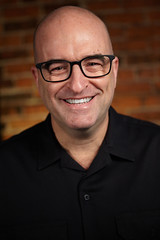 About the Interviewer
About the Interviewer
Greg Bennick (www.gregbennick.com) is a keynote speaker and long time coin collector with a focus on major mint error coins. Have ideas for other interviewees? Contact him anytime on the web or via instagram @minterrors.
To watch the complete video, see:
Ron Gillio Interview
(https://archive.org/details/rongilliointerviewvideo)
To read the complete transcript, see:
Ron Gillio Interview (Transcript)
(https://archive.org/details/gilliointerviewtranscript2)
To read the earlier E-Sylum article, see:
RON GILLIO INTERVIEW, PART ONE
(https://www.coinbooks.org/v26/esylum_v26n41a11.html)
RON GILLIO INTERVIEW, PART TWO
(https://www.coinbooks.org/v26/esylum_v26n42a17.html)
NUMISMAGRAM MEDAL SELECTIONS: OCTOBER 22, 2023
Numismagram's Jeremy Bostwick forwarded these five fascinating tokens and medals from his most recent upload of new material to his site. This particular group is very seasonally appropriate, and features numismatic nightmares with rather haunting iconography. For all of the new items, please visit https://www.numismagram.com/inventory. -Editor
102468 | GERMANY. Hamburg. Satirical silver Medal. Issued circa 1708 or slightly thereafter. The supposed corruption of the imperial commission by the Jewish community (23mm, 4.64 g, 6h). By an uncertain medallist, marked "T." DU SOLST NICHT GESCHENCK NEHMEN (thou shalt take no gift...), hand putting forth a coin; across the middle, banner reading KOMSTU MIR ALSO (if you'll scratch my back...) // DENN GESCHENKE MACHEN DIE SEHENDEN BLIND (...for a gift blindeth them that have sight, and perverteth the words of the righteous, –adapted from Exodus 23:8 [2nd Book of Moses]), bust facing slightly right, with hand nearly covering face, though with eyes peering through; t on sleeve; across the middle, banner reading SO KOMME ICH DIR SO (...I'll scratch yours). [The underlined legends are meant to be read as a complete message, while the non-underlined legends are meant to be a separate complete message.] Edge: Reeded. Cf. GPH 1220-1 (different medallist); Brettauer 4796; Fieweger Coll. 345; cf. Vogel Coll. 8739 (gold). PCGS MS-62. Most attractively toned, with some cobalt and violet notes around the devices, and great brilliance remaining. Undoubtedly one of the more alluring examples of the type that one can hope to encounter. Compare to a similar (though highly inferior) example (PCGS AU-53) from a different medalist (Wermuth) that realized a total of $660 in the Stack's Bowers 2021 NYINC auction, lot 23546. $985.
The city of Hamburg had a festering issue between its Senate and Citizens' Council in the late 17th century, with its local Jewish population a chief concern. Though a Sephardic Jewish population had much more long-standing roots in the city, the Ashkenazi population was, in contrast, much more recent and without actual legal status regarding its ability to reside there. The Citizens' Council—dominated by orthodox Protestants—along with the Lutheran clergy sought to block any concessions by the Senate to the Jewish populations, with the issue eventually escalating much higher within the hierarchy of the Holy Roman Empire.
Emperor Joseph I appointed an imperial commission, led by Damian Hugo Philipp von Schönborn-Buchheim, to settle the dispute between the Senate and Citizens' Council in Hamburg. Ultimately, the commission redefined the legal relationships of the Sephardic and Ashkenazi Jewish populations in Hamburg, with the regulations becoming part of the new Hamburg constitution in 1712. It is quite likely that this satirical medal, along with the various others that share a common design and message, were meant to convey the idea that the Jewish citizenry had bribed the commission for recognition of their status, furthering an antisemitic viewpoint among the largely Protestant populace. Given the contemporary works of medallists like Christian Wermuth (who also contributed to this specific "series"), and his satirical issues like the "corn Jew," the concept of antisemitic medals would be completely within the context of the period, and seemingly a likely cause that would generate such a concerted medallic effort among numerous workshops.
To read the complete item description, see:
102468 | GERMANY. Hamburg. Satirical silver Medal.
(https://www.numismagram.com/product-page/102468)
102001 | NETHERLANDS. Maastricht. St. Martin cast brass Funeral Token (Begrafenisloodje). Dated 1733. Receipt for prepaid funeral expenses (32mm, 13.13 g, 5h). Skull and crossbones; star below // S MARTINI, Saint Martin riding horse left, head right, giving his cloak to a beggar to right. Minard 357. PCGS EF-45. Yellow-brown surfaces, with lighter hues on the higher points; cancellation punch (as intended) on each side. Rare and interesting. The finer of just three seen in the PCGS census, and by far much more attractive and detailed than the other two. $1,895.
Begrafenisloodje served multiple roles in the Low Countries during the 16th-19th centuries, acting as payment for gravediggers, pallbearers, or other funerary expenses, or acting as a commemorative for the funeral of the deceased—either to those attending the ceremonies or to the respective church in remembrance of the departed. Where they were utilized to indicate payment, a punch was generally placed upon one or both sides to act as a form of "cancellation" for the services rendered and payment received.
To read the complete item description, see:
102001 | NETHERLANDS. Maastricht. St. Martin cast brass Funeral Token.
(https://www.numismagram.com/product-page/102001)
102402 | NETHERLANDS. Amsterdam. Surgeon's Guild cast brass Toegangspenning (Admission Token). Engraved 1766 for Willem Evers, for the passing of the surgeon's exam/admission to the medicinal garden (42mm, 30.41 g, 12h). Skeleton (Grim Reaper) standing facing, holding scythe and resting hand upon hourglass on base to right; flowers at feet // HORTUS MEDICUS (medicinal garden), vase with various flowers set upon ornate base engraved "WILLEM EVERS / 17 66" and bearing the date 16-84. Edge: Plain. Brettauer 5198. Extremely Fine. Charming olive-brown surfaces, with a few spots of green on the reverse. A very rare and interesting medicina in nummis type. Compare to a similar example (though unengraved) that realized a total of $2,640 in the Stack's Bowers October 2021 CCO (lot 72539). $1,965.
The obverse of this type—featuring a figure of Death along with an hourglass—is an allusion to the transient nature of life and, as such, a memento mori. It was used in Amsterdam as a token of one's membership into the guild of surgeons. Meanwhile, the reverse refers to the city's medicinal garden—the so-called hortus medicus—which housed various flora that could be used medicinally. Following the fallout of the plagues that had gripped Europe, along with portions of the rest of the world, the understanding and cultivation of plant-based remedies began to take form, with this garden serving in that role. The bearer of such a token would also have access to these grounds to make use of the plants grown.
To read the complete item description, see:
102402 | NETHERLANDS. Amsterdam. Surgeon's Guild cast brass Toegangspenning.
(https://www.numismagram.com/product-page/102402)
102327 | GERMANY & ITALY. Italy's Wavering Alliances cast iron Medal. Issued 1915 (73mm, 89.32 g, 12h). By H. Lindl. VORBEREITUNG ZUM EINTRITT IN DEN WELTKREIG, skeleton standing right, sharpening saber upon whetstone // D'ANNUNZIO BEGEISTERT ITALIEN ZUM KRIEG, D'Annuzio, in top hat and tails, standing right upon clouds, holding saber and speaking to the masses acclaiming below. Edge: Minor casting flaw as made in one spot, otherwise plain. Klose –; The Art of Devastation –; Frankenhuis 1508. PCGS MS-62. Charcoal gray surfaces, with a great matte nature. A very rare and haunting World War I-related satirical issue, and the only such example of the type in the PCGS census. A great analog to Eberbach's "Totentanz" series, issued contemporaneously and in a similar size, but far less encountered in the market. $1,495.
Following five years living abroad in France, the famed Italian poet, Gabrielle D'Annunzio, returned to Italy in the spring of 1915, whereupon he began urging his homeland to join the cause not with the Central Powers, as Italy had fought, but with the Allied Powers. D'Annunzio's passions spread, even causing riots, with Antonio Salandra, the Italian Prime Minister, leading Italy back into the war with her former enemy.
To read the complete item description, see:
102327 | GERMANY. Italy's Wavering Alliances cast iron Medal.
(https://www.numismagram.com/product-page/102327)
102331 | GERMANY, GREAT BRITAIN & UNITED STATES. Satirical cast iron Medal. Issued 1916. Totentanz (Dance of Death) series: The Sinking of the RMS Lusitania (69mm, 69.03 g, 12h). By W. Eberbach. HEIMTÜCKE • U • GEWARNTER • LEICHTSINN • AN • BORD • D • LUSITANIA (malice and forewarned recklessness on board the Lusitania), Death (as a skeleton) standing over the sinking Lusitania in taunting stance // DEM / VERÄCHTER / DER • WARNUNG / WOODROW / WILSON / 1916 (to the despiser of warnings, Woodrow Wilson) in six lines within scalloped polylobe. Edge: Some filing marks as made, otherwise plain. The Art of Devastation, p. 264, 60; Frankenhuis 1497. PCGS MS-62. Light charcoal gray surfaces, with a somewhat matte nature. Compare to a similar raw example (though with noted graffito in the obverse field) that realized a total of $1,920 in the Stack's Bowers 2021 ANA auction (lot 40405). $1,795.
Similar to the satirical medallic issues of Karl Goetz, Walther Eberbach was inspired by the events of World War I to create a series of rather morbid medals to propagandize the German war effort. The theme upon which he decided to focus was the Totentanz, or "Dance of Death." This series of issues, a divergence from the ephemeral topic of vanitas, portrayed Death as a skeleton, quite gleefully taking joy in the demise of his enemies—the allied powers—rather than a subtle reflection upon life and death. This frank morbidity is expressed by Eberbach himself in a letter to Julius Menadier, in which he writes "...I want whoever holds the pieces in their hands years later to be overcome by the shudder grimness." It's safe to say that, in this desire, Eberbach was astoundingly successful.
This haunting piece recounts the sinking of the Lusitania from the German perspective, denying their responsibility and instead placing it upon U.S. president Woodrow Wilson. The contents on board (referenced on the obverse) are an allusion to the munitions which the Lusitania was secretly carrying—a violation of the warnings issued in February 1915.
To read the complete item description, see:
102331 | GERMANY. Sinking of the "Lusitania" cast iron Medal.
(https://www.numismagram.com/product-page/102331)
ARCHIVES INTERNATIONAL AUCTION 88
Here is the announcement for the October 24, 2023 sale by Archives International Auctions. -Editor
ARCHIVES INTERNATIONAL AUCTIONS OFFERS HISTORIC U.S., CHINESE & WORLD BANKNOTE & COIN COLLECTION ON OCTOBER 24, 2023.
The auction will be held by Archives International Auctions at their offices in River Edge, N.J.
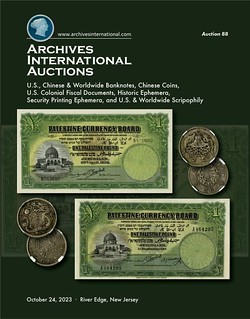 The October 24th, 2023 Auction by Archives International Auctions consists
of 688 lots of rare and desirable U.S., Chinese & World Banknotes, Scripophily, Chinese Coins,
U.S. Colonial Banknotes and Fiscal Documents, Historic Ephemera, and Security Printing
Ephemera in two sessions over one day; The auction includes over 290 lots of World banknotes
highlighted by 2 Palestine Currency Board banknote rarities, a 1927, 1 Pound note that is
Legacy graded Choice About New 58 PPQ, and a 1939, 1 Pound note, that is Legacy graded Gem
New 65PPQ, with only one note grading higher in the PMG census out of nearly 700 graded,
both notes are close to the finest known for the issue and would be literally impossible to
improve upon.
The October 24th, 2023 Auction by Archives International Auctions consists
of 688 lots of rare and desirable U.S., Chinese & World Banknotes, Scripophily, Chinese Coins,
U.S. Colonial Banknotes and Fiscal Documents, Historic Ephemera, and Security Printing
Ephemera in two sessions over one day; The auction includes over 290 lots of World banknotes
highlighted by 2 Palestine Currency Board banknote rarities, a 1927, 1 Pound note that is
Legacy graded Choice About New 58 PPQ, and a 1939, 1 Pound note, that is Legacy graded Gem
New 65PPQ, with only one note grading higher in the PMG census out of nearly 700 graded,
both notes are close to the finest known for the issue and would be literally impossible to
improve upon.
The auction also contains 54 lots of rare and desirable Chinese banknotes, & Scripophily, and 66 lots of rare Chinese coins from an old collection being offered to the first time to the collecting public after being purchased in the 1950s and 1960s. Also included are over 66 lots of historic U.S. Colonial banknotes, Colonial Connecticut fiscal documents, U.S. Obsolete banknotes, Small and Large Type Notes, National Banknotes, and miscellaneous U.S. fiscal documents; Historic and Security Printing Ephemera includes 54 lots of rare and seldom seen items; and, over 181 lots of U.S. and World scripophily.
We are excited to offer numerous rare and desirable banknotes, historic ephemera and bonds
and shares that are rarely seen at auction and include many examples we have never had the
pleasure to offer previously
, stated Dr. Robert Schwartz, President of Archives International
Auctions. Included in our 88th auction are hundreds of items that will appeal to every level of
collector and dealer
.
The auction begins with World Banknotes, from countries Albania to Yugoslavia, with a few of the many highlights featuring a China, 1917, Russo-Asiatic Bank, 3 Rubles Specimen graded PMG Gem Unc. 66 EPQ, the highest graded example out of 16 previously graded; an outstanding, Peihai Bank, 1945, 100 Yuan rarity is offered with this being the first appearance at auction ever for this note type, which is Legacy graded About New 50 and is one of the highest graded examples out of a total of 5 graded in the PMG census; A significant Chinese Government, 1912, Issued and Uncancelled 500 Pound Gold Bond is offered, and is the first example we have seen at auction in over 10 years.
Coins from China are represented by 66
different examples, including a number of rarely seen and also popular types, such as 6
examples of the desirable Dragon & Phoenix
, 1926, 20 cents issue, with examples NGC graded
between VF 30 to AU 50; 5 examples of the desirable 1949, Yunnan, 20 cents issue, KM-Y493
are offered in various grades from XF-45 to AU 53; 7 lots of Kwangtung issues are offered
including a high grade, 20 cents, L&M-135 with a coiled dragon grading NGC CU 64. Another
major highlight includes a Republic of China, 10 Cents, Year 3 (1911), L&M-41, NGC graded XF
40 which is rarely seen this nice. The coin session has too many varieties to list completely.
Guatemala is represented by 3 notes, with the highlight being a very attractive 1923, 25 Pesos,
Banco Agricola Hipotecario note PMG graded Very Fine 30 and the first example we have
offered in 15 years. Israel 4 notes with 2 of the highlights including a, Israel Anglo-Palestine
Bank Limited, 50 Pounds Specimen notes Legacy graded New 62, also rarely seen, and 1952,
Bank Leumi Le-Israel, 10 pound note, that is the highest graded in the PMG census out of 15
notes graded. Malaysia is represented by an extremely rare Watermark Essay of T.A. Rahman
testing DuraNote Polymer paper in the late 1980s to very early 1990s.
Previews will be limited and by appointment only. We will do our best to accommodate anyone who desires additional information and photographs. For questions, please call 201-944-4800 or email info@archivesinternational.com.
The online catalog for the Tuesday, October 24th, 2023 auction is on Archives International Auctions' website and can be viewed via the Archives International live bidding platform. It can also be viewed as a Virtual Catalog or downloadable Sale 82.pdf on their website. To pre-register for Live Internet Bidding, log on to the Archives International Auctions website, at www.ArchivesInternational.com.
Archives International is now working on their Winter and Spring 2023 auctions and are seeking quality consignments for future auctions or outright purchase including U.S. and worldwide banknotes, coins, stocks, bonds, stamps, postal history, historic ephemera, and autographs. To sell or consign one piece or an entire collection, please call AIA at (201) 944-4800; or email them at info@archivesinternational.com
You may also write to Archives International Auctions, at 1060 Main Street, River Edge, NJ 07661, U.S.A. To learn more about Archives International Auctions and the auctions planned for Winter 2023, auction, log on to www.ArchivesInternational.com.
DR. BUSSO PEUS FALL 2023 AUCTIONS
The auction house Dr. Busso Peus Nachf will offer coins, medals and numismatic literature in sales on October 31st through November 1st. Here's the announcement. -Editor
The autumn auction of the House of Dr. Busso Peus Nachf. extends over three auction days, which are reflected in two auction catalogs.
Day 1, October 31st , traditionally opens with the antiques (488 lots). The distribution of Greek and Roman characters is roughly equal. The majority of the ancient coins can demonstrate solid auction provenance, which in the case of No. 301, an Antoninian of Laelianus, goes back to the Prince Waldeck collection, auctioned in 1935, and in one case (No. 247) even to the 18th century. Among the Greeks
deserve a magnificent tetradrachm of Mithradates VI. from Pontus (No. 110) and the title piece of the catalog, a gold trihemistater from Carthage (No. 177), minted in the middle of the First Punic War, special appreciation. The Roman world is represented with numerous rarities, starting with the provincial coins, where two rarissima (nos. 188, 189) from the Burstein collection, which were auctioned in our house over 20 years ago, next to a magnificent bronze of Cleopatra (no. 192) may be of some interest to connoisseurs. Among the Romans
a pair of gold pieces recorded and depicted as unique in Robert Göbl's corpus of Gallienus is one of the highlights (nos. 292, 293). A solidus of Constantius II from Arelate (No. 317) and one of Magnentius (No. 322) both stand out with their good preservation and great rarity. Finally, the rarely offered Byzantine Emperor Alexander, a particularly desirable piece of gold, is also represented in the last part (No. 361). The antiques section concludes with a wide range of collector-friendly, low-valued lots.
Lot 110: Pontos. Mithradates VI. Eupator, 120 - 63 BC. Tetradrachm 85/84 BC, uncertain mint. EF/about FDC Estimate 10.000€
Lot 177: Carthage. Gold-Trihemistater ca. 260 BC, Karthago. Rare, EF Estimate 30.000€
Lot 192: Egypt, Alexandria. Kleopatra VII, 50-31 BC. Bronze year 2 (=36/35 BC) About EF Estimate 1.500€
Lot 292: Gallienus, Aureus 254/256. Viminacium. Unique. About EF Estimate 4.000€
Lot 293: Gallienus. Binio 260/261, Rom. 2nd known example EF – FDC Estimate 10.000€
Lot 317: Constantius II., 337-361. Solidus 353, Arelate (Arles). EF / FDC Estimate 3.000€
Lot 322: Magnentius, 350-353. Solidus 351, Augusta Treverorum (Trier). EF Estimate 4.000€
Lot 361: Byzantine Empire. Alexander, Solidus 912-913, Constantinople. Very rare VF Estimate 20.000€
On October 31 in the afternoon the auction of foreign coins of this year's autumn auction will begin. Among these, a series of Indian and Iranian gold coins, a short selection of Polish coins and a collection of Swiss Shooting Talers are worth mentioning. Most notably, however, are several ducats and multiple ducats of the First Czechoslovak Republic, including a 10x ducat 1929 as a top piece. On the same day, a collection of 130 numbers of the Habsburg hereditary lands from 1486 to 1918 will follow, including coins of Salzburg and Transylvania.
The second day of the auction, November 1, will be opened by the German feudal coins with first of all a collection of talers of the imperial cities of Augsburg, Nuremberg and Regensburg.
In Nuremberg alone, there are more than 80 numbers together. Outstanding here is an undated thick Double "City Hall Taler" (1688), which, according to our auction archive (ongoing since 1870), was never auctioned before. In addition, there are numerous talers, medals and gold coins, some of which are very rare all over. Here we would like to point out a Saxon gold medal weighing 21 ducats of 1889 on the 800th anniversary of the House of Wettin by K. Diller at Lauer, Nuremberg. According to the literature, only two copies were struck in gold and, according to our card archive, have not been auctioned since 1870. It is with great certainty a unique opportunity.
This is followed by the exceptionally large offer of coins of the German Empire in gold and silver. Top piece among them is the Bavarian 3-Mark piece 1918, on the royal marriage jubilee (J. 54). Modestly taxed combined lots close the offer as usual.
Lot 781: Czechoslovakia. 10 Ducates 1929, Kremnitz. EF/FDC Estimate 15.000€
Lot 801: RDR. Archduke Sigismund the Coin Rich, 1439-1490, under guardianship until 1460. Guildergroschen 1486, Hall. About Very Fine Estimate 2.500€
Lot 1018: Brandenburg - Ansbach, Margraviate. Karl Wilhelm Friedrich. 4 ducats 1729, Schwabach. EF Estimate 50.000€
Lot 1226: Nuremberg, imperial city. Double Reichsthaler o. J. (1688), "Double Rathaustaler". EF/FDC Estimate 75.000€
Lot 1340: Saxony, Kingdom. Albert, 1873-1902. gold medal weighing 21 ducats. 1889, on the 800th anniversary of the House of Wettin. About FDC Estimate 20.000€
Lot 1467: Bavaria, Kingdom. Ludwig III. 3 Mark 1918, on his Golden Wedding Anniversary. J. 54. Matte FDC Estimate 30.000€
Lot 1525: Hesse, Grand Duchy. Ernst Ludwig, 3 Mark 1917, 25th anniversary of the reign. Proof Estimate 4.000€
Thursday, November 2, is entirely reserved for the collection Dr. Jürgen Baur - Cologne and linked territories. This collection in special catalog 436 contains nearly 800 coins and medals in gold and silver (and some in copper) of the city and archbishopric of Cologne and the numerous bishoprics that were closely linked to Cologne in the person of the archbishop. The medieval imperial mints in the archbishopric of Cologne form the beginning of the collection, which extends through the medieval and modern coins of the archbishopric and the city of Cologne to medals in the Prussian state. Among the numerous rarities, only an archbishop's ducat 1750 (no. 3215), a Deutz mint taler 1694 (no. 3186) and a city's thick double taler (a so called "Ursulataler") circa 1620 (no. 3279) should be mentioned here.
This is followed by the numerous coins and medals with historical reference to Cologne. The bishop's reign at times far beyond Cologne makes this collection so interesting for any collector, whether interested in Cologne, Westphalia or simply beautiful coins and medals. It should be worth browsing for everyone. Cologne as a theater of war between the powers makes references to Brandenburg-Prussia, Saxony, the Netherlands or England. As a domain for the Wittelsbach family's sideline (from 1583-1688) the Baur collection is also of value for the collector of Bavarian coins, collectors of the history of the Reformation will find references to the not so clear fight of the confessions.
Incidentally, the catalog also contains some ancient coins, bracteates and talers, which Dr. Baur collected simply for the joy of beautiful coins.
The second great passion of the collector was bibliophile numismatic literature. The library contains almost exclusively, partly very rare original prints back to the 17th century. In addition, for the sake of simplicity, the books of catalog 435 are also auctioned at the end of the day.
Lot 3186: Cologne, Archbishopric. Joseph Clemens of Bavaria. Imperial thaler 1694, Deutz. Very rare Very Fine Estimate 5.000€
Lot 3215: Cologne, Archbishopric. Clemens August of Bavaria. Ducat 1750, Bonn. EF Estimate 5.000€
Lot 3279: Cologne, imperial city. Thick double thaler o. J. (around 1620), so called "Dreikönigs- or Ursulaprägung". Very rare Very Fine Estimate 3.000€
Lot 3504: Münster, diocese. Sedisvakanz 1761-1762. gold strike from the dies of the Schautaler 1761. Seemingly unedited EF Estimate 5.000€
Lot 3519: Paderborn, Bishopric. Clemens August of Bavaria. 1/2 Max d'or 1720. EF Estimate 7.500€
Lot 3536: Trier, Archbishopric. Boemund II of Warsberg. Gold florin o. y. (1356/1362), Coblenz, without mention of the mint. EF Splendid specimen Estimate 7.500€
For more information, or to bid, see:
https://www.peus-muenzen.de/
https://www.muenzen-online.com/post/vorschau-auf-die-auktion-dr-busso-peus-nachf-in-frankfurt-vom-31-oktober-bis-2-november-2023
KUENKER AUCTIONS 395-397, PART 2
Künker will hold five auction sales in November. Here's the second part of the press release detailing highlights of sales 395-397. -Editor
Auction 397: Coins from the Ancient World
A journey through the entire ancient world – this experience is made possible by auction 397 on 14 and 15 November. No matter what field you are interested in, auction 397 has something on offer that fits your collection perfectly. Many small and two large collections will be sold. The first one is the Dr. Kurt Conzen Collection, which was mainly acquired in the 1970s and 1980s from major auction houses. The second large ensemble is from the estate of Maître Robert Schuman. It consists of gold coins of excellent quality and covers both Greek as well as Roman and Byzantine gold issues.
A highlight of the sale is a necklace and a bracelet, probably made for Pauline Borghese, Napoleon Bonaparte's little sister. The necklace was among the great showpieces at the then very important Art and Antiques Fair in Delft in June 1966.
No. 2018: Parisii (Celts). Gold stater around 60 BC. Very rare. Very fine +. Estimate: 12,500 euros
No. 2155: Panticapaeum (Scythia). Gold stater, 340-325. Rare. From the Jameson Collection 2145. About extremely fine / Very fine +. Estimate: 60,000 euros
No. 2295: Lampsakos (Mysia). Electrum stater around 450. Rare. From Vinchon auction, Monte Carlo 1975, No. 104. Very fine +. Estimate: 30,000 euros
No. 2361: Tryphon, 141-138 (Syria). Tetradrachm, Antioch. Very rare. Extremely fine. Estimate: 12,500 euros
No. 2406: Arsinoe II (Egypt). Octodrachm, Alexandria. From the Maître Schuman Collection. Extremely fine to FDC. Estimate: 15,000 euros
No. 2475: P. Clodius Turrinus (Roman Republic). Aureus, 42. From the Maître Schuman Collection. Rare. Very fine + / Extremely fine. Estimate: 15,000 euros
No. 2505: Coin jewelry related to Pauline Bonaparte, the sister of Napoleon I. Gold necklace made of two plated gold cords with alternating triangular decorations and 14 mounted Roman aurei. Estimate: 100,000 euros
No. 2586: Galba, 68-69. Aureus. Very rare. From the Maître Schuman Collection. Very fine +. Estimate: 15,000 euros
No. 2750: Pertinax, 193. Aureus. Very rare. From the Maître Schuman Collection. From the H. Osborne O'Hagan Collection, Sotheby, Wilkinson & Hodge auction (1908), No. 493. Very rare. Very fine +. Estimate: 15,000 euros
No. 2784: Macrinus, 217-218. Aureus, March / June 218. Very rare. From the Leo Biaggi de Blasys Collection 1262. FDC. Estimate: 125,000 euros
No. 2910: Constantine I, 306-337. Medallion of 1 1/4 solidi (festive aureus), 335, Thessaloniki. Very rare. From the Maître Schuman Collection. About extremely fine. Estimate: 20,000 euros
No. 2912: Crispus. Solidus, 324, Nicomedia. Extremely rare. From the Maître Schuman Collection. Extremely fine. Estimate: 10,000 euros
No. 3077: Iustinianus II, 2nd reign 705-711. Solidus, 705, Constantinople. Very rare. From the Maître Schuman Collection. Extremely fine to FDC. Estimate: 2,000 euros
No. 3084: Artavasdos, 742-744, and Nikephoros. Solidus, Constantinople. Extremely rare. Very fine. Estimate: 20,000 euros
NORTH WALES ROMAN COIN FIND
A hoard of Roman coins has been discovered in North Wales. Thanks to Gary Beals and Arthur Shippee for passing this along. -Editor
A pair of novice metal detectorists have discovered a giant Roman hoard of 2,733 coins worth tens of thousands of pounds.
David Moss, 34, and Tom Taylor, 35, found the remarkable haul of 2nd and 3rd century AD silver and copper-alloy coins in a ceramic vessel in a muddy field.
Tom is an avid watcher of Time Team so, with official permission, he and David carefully excavated the pot which was 12ins below the surface before wrapping it in bandages.
The pot was later examined using CT-scans which showed it was full of ancient coins.
They are thought to date from the reigns of Postumus (AD 260-269) and Victorinus (269-271AD) and were found near the remains of a Roman temple in north Wales excavated ten years ago.
The vessel also contained silver Denarii (69-150AD) coins struck over a century earlier.
Experts believe they were deposited in the field Caerhun, Conwy valley, possibly by a Roman soldier as an offering because of the site's religious significance.
The hoard has been declared as treasure by the assistant coroner for North Wales, Kate Robertson.
Gary writes:
"We see pots of treasure pop up in the press frequently -- but to me this is the first time I have seen high tech used to explore the nature of the coins in the ancient container. I think it is a fast way to learn more about all those corroded coins!"
To read the complete article, see:
Talk about striking gold! Time Team fan uncovers a huge hoard of Roman coins in a field in North Wales
(https://www.dailymail.co.uk/sciencetech/article-12653161/Talk-striking-gold-Time-Team-fan-uncovers-huge-hoard-Roman-coins-field-North-Wales.html)
A NUMISMATIC HISTORY OF NEW ZEALAND
Joshua Lee submitted this survey article on New Zealand rarities. Thank you. -Editor
In 1840, New Zealand was under the extension of British law upon the signing of the Treaty of Waitangi. As a result, specific provisions from the British Imperial Coinage Act of 1816 were applied to the colony, enabling the standard gold, silver, and bronze coins to be used alongside various foreign coins, all of which were recognised as legal tender in New Zealand.
New Zealand Early Currency
In the mid-1800s, due to a shortage of coins, particularly copper ones, private merchants issued their own penny and half penny, commonly referred to as Tradesman Tokens, which remained in circulation until they were phased out of circulation in the 1880s.
One of the most interesting albeit controversial items from this period is the 1879 "Pattern Penny" by Joseph Moore, which remains highly sought-after despite its classification as a token, dated 61 years before the first Royal Mint pennies and halfpennies in 1940 under King George VI.
New Zealand Most Famous Coin
Following a declaration under the Coinage Act of 1933, British coins lost their status as legal tender from 1 February 1935. Instead, New Zealand adopted its coinage system, maintaining the Imperial coins' exact weights, dimensions, and values.
The world-famous 1935 Waitangi Crown of Five Shillings is the first New Zealand crown issue, depicting the pivotal agreement that represents the signing of the Treaty of Waitangi on 6th February 1840. Featuring on the reverse, a finely detailed depiction of a Ngapuhi Maori chief, Tamati Waka Nene and New Zealand's first governor William Hobson shaking hands.
The First New Zealand Government Issued Banknotes
The first issue of the Reserve Bank of New Zealand banknote depicts Chief Tawhiao - the second Maori King, a Kiwi, and Mitre Peak. Initially intended as a temporary issue, the design lasted from 1934 to 1940.
This example uniquely stands out as New Zealand's First Circulating No.1 One Pound, reportedly spent in 1935 as payment for a room, and framed upon the hotel owners realising its significance.
The Highest Denomination Banknote for New Zealand
Around the same time, private "Trading Banks" issued their own banknotes until the Reserve Bank of New Zealand was established in 1934. The Bank of New Zealand was the largest of those banks and still operates to this day. To this day, the highest denomination of either coin or banknote ever issued for circulation in New Zealand would be 100 Pounds.
A quote from the 1900s from Robert Pepping's publication exemplifies the rarity of a 100-Pound banknote
"I have never seen a 100 Pound note[…]. For the ordinary mortal, it is one of those things that are too good to be true."
The 100-Pound above was formerly owned by Amon Carter, whose collection contained some of the world's best examples of coins and banknotes. Amon Jr. was a prolific collector-dealer and held the title of IBNS Life Member #5
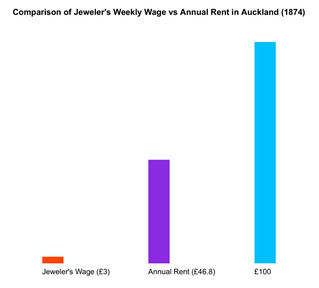 To demonstrate the immense purchasing power of a single One Hundred Pounds, consider the
following statistics from The Official Handbook of New Zealand 1875. In 1874, a jeweller,
considered among the higher earners, received £3 weekly. On the other hand, the cost to rent
a typical six-room house in Auckland ranged between 12 shillings to 18 shillings per week.
This translates to an annual rent ranging between £31.2 and £46.8.
To demonstrate the immense purchasing power of a single One Hundred Pounds, consider the
following statistics from The Official Handbook of New Zealand 1875. In 1874, a jeweller,
considered among the higher earners, received £3 weekly. On the other hand, the cost to rent
a typical six-room house in Auckland ranged between 12 shillings to 18 shillings per week.
This translates to an annual rent ranging between £31.2 and £46.8.
Remarkably, a single £100 note could cover over two years of rent for such a house.
On 9th November 2023, at Heritage Auction's World Paper Money Signature Auction, New Zealand's Highest Denomination Banknote - Amon Carter's Bank of New Zealand £100 - will be up for sale.
To read the complete lot description, see:
New Zealand Bank of New Zealand, Auckland 100 Pounds ND (1928-1929) Pick S196bs Specimen PMG Choice About Unc 58
(https://currency.ha.com/itm/world-currency/new-zealand-bank-of-new-zealand-auckland-100-pounds-nd-1928-1929-pick-s196bs-specimen-pmg-choice-about-unc-58/a/4045-24509.s)
TEA TOKENS
Here's an excerpt from a very nice article on tea tokens from The Daily Star. See the complete article online for more. -Editor
The emergence of tea as a beverage in India is a unique social event in history. Sylhet, Assam, Cachar, Dooars, and Darjeeling were preferred for tea production, considering the hill climate favorable for tea production. These tea regions were known as Surma, Assam, Barak, and Brahmaputra valleys. Tea production began in the middle of the 19th century. At that time, it was unprofitable for the plantation authorities to pay the wages of the workers in the government currency. That's why workers were given tea-tokens as wages.
This facilitated the payment of daily, weekly, or monthly wages to a large group of workers. These not only reduced the hassle of storing large amounts of petty cash but also reduced the financial burden on tea planters. There were tokens of different values, pi, paisa, anna, and then. They were of all shapes and sizes; such as round, oval, triangular, hexagonal, and octagonal.
The value of the tokens was fixed in relation to the wage rate of the workers. The use of tokens was limited within the geographical boundaries of the garden. As everyone concerned with the garden was well aware of their value, no problem would have arisen. For almost a hundred years, these tokens have played an important role in the lives of tea workers.
Basically, the stories and accounts of the discovery of these tokens are known from the journals related to currency. Why and how the tea-token based system was developed in tea plantations despite the existence of the monetary system in British India is discussed in the article.
The "pai" served as the smallest unit of currency used in British India after the monetary system stabilized. Above the "pai" were the "money," then the "anna," and finally the "rupee," with 192 "pies" or 64 paise to one rupee. One anna was equivalent to 12 pies, and 16 annas made up one rupee. To pay the wages of workers, a significant number of small denomination coins such as "pies," "paisas," and "annas" were required.
However, due to a shortage of these coins from the mint, the authorities of tea estates faced considerable challenges and had to go to great lengths to mint large quantities of money to obtain the necessary coins. To address this crisis, many tea estate authorities began using tea-tokens as their medium of exchange.
These tokens were made from brass, zinc, copper, and tin. In addition to metal tea-tokens, there were traces of colored cardboard eight-anna value tokens (of Assam Company). Some tokens had a face value, while others were based on work rates, such as the Quarter Hazri type tea-tokens. The term "Hazri" used in the tokens originated from "Hazira." "Day attendance" was the method of remuneration in those days, with a specific type of work assigned for "Dayhajira," meant to be completed within one day. There was a fixed rate of daily remuneration for this work. The wage system for tea plantation workers differed from that of other industries or agriculture, as jobs were allocated to families rather than individuals, with husbands, wives, and minor children all contracted to work. "Tikka," or extra work, was compensated at a slightly higher rate.
According to coin collector and expert Shankarkumar Bose, several hundred tea-tokens have been identified from a total of 85 tea plantations in Assam, Barak, and Brahmaputra valleys, including 54 in the undivided Surma (Sylhet) valley. These tokens typically measured twenty to thirty-two millimeters in width and predominantly featured English characters. Some tokens also bore inscriptions in Assamese or even Bengali, such as "Chilet." While some tokens had writing on only one side, most had inscriptions on both sides. Notably, none of these tokens displayed denominations; they solely featured the name of the tea garden. Presumably, to avoid the attention of the Labor Inquiry Commission, many tea estates refrained from indicating monetary values on their tokens. Furthermore, many tokens were engraved with the year of issue, and most of them featured round holes in the center. Three different shapes of tokens were used for male, female, and child laborers, with the remuneration rates being highest for adult male workers.
To read the complete article, see:
Tea-Tokens: A forgotten chapter in the history of tea plantations
(https://www.thedailystar.net/opinion/focus/news/tea-tokens-forgotten-chapter-the-history-tea-plantations-3432341)
1879 HONG KONG ORIENTAL BANK NOTE OFFERED
A Stack's Bowers Galleries blog article by Senior Numismatist Dr. Kelvin Cheung, Director (Asia) discusses a rare Hong Kong banknote. -Editor
Stack's, Bowers and Ponterio is proud to present an extraordinary uncancelled 5 Dollar note dated March 7 and issued by The Oriental Bank Corporation. Only four to five notes of this type are known to be extant.
The Bank was original founded in Bombay as the Bank of Western India in 1842. It expanded rapidly in Asia during the 1840s with offices opening in Colombo (1843), Calcutta (1844), Shanghai (1845), Canton (1845), Singapore and Hong Kong (1846). The Bank was renamed Oriental Banking Corporation in 1851 after acquiring a royal charter.
The Bank continued its rapid expansion during the 1850s with offices opening in major cities such as Madras, Yokohama, Foochow, Hiogo, and San Francisco. By the 1860s it became the most powerful, oldest, and most prestigious Eastern exchange bank.
The Bank's fortunes dwindled rapidly during the 1870s as a result of bad loans in Ceylon and Mauritius, and it was eventually liquidated in 1884. The business was reconstructed as the New Oriental Bank Corporation but failed again for good in 1892.
The note featured in this article was originally dated March 7, 1866, but the year was overprinted to 1879. The Bank arms, featuring a crowned shield supported by a lion and unicorn, is shown at upper center. Two neat, concise and clearly discernible hand signed signatures are found at lower left and right. Lastly, the note bears a mixed ladder
serial number – H64753.
This is a magnificent issued, choice original note from what was one of the most powerful banks of the mid 19th century. It is currently open for private treaty at Stack's, Bowers and Ponterio or it will be offered at auction in 2024.
To read the complete article, see:
AN INCREDIBLY RARE FIVE DOLLARS ISSUED BY THE ORIENTAL BANK CORPORATION DATED 1879
(https://stacksbowers.com/an-incredibly-rare-five-dollars-issued-by-the-oriental-bank-corporation-dated-1879/)
THE MINT'S PRODUCTION MAINTENANCE DIVISION
This article from the U.S. Mint website describes some of the day-to-day work of production maintenance staff. Here's an excerpt - see the complete article online. -Editor
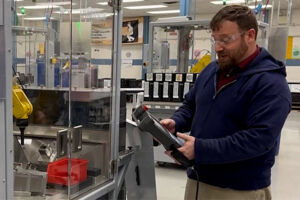 The United States Mint production facilities rely heavily on advanced machinery to make our nation's coins. Whether machines are recent innovations or old favorites, Mint employees' expertise helps keep production on track. Meet some of these skilled technicians and learn how they serve an important role at the U.S. Mint in Philadelphia.
The United States Mint production facilities rely heavily on advanced machinery to make our nation's coins. Whether machines are recent innovations or old favorites, Mint employees' expertise helps keep production on track. Meet some of these skilled technicians and learn how they serve an important role at the U.S. Mint in Philadelphia.
Engineering technicians at the Philadelphia Mint help keep the robotic packaging line working efficiently. AJ Neider is one of those technicians. He maintains a eight robots that package the Mint's annual uncirculated sets, fixing both mechanical and programmatic issues.
We have automated lines that produce our collectible sets annually, so that means I process materials and maintain the robotics
so the machines operate as intended. With the help of AJ and these robots, the Philadelphia Mint produced over 270,000 uncirculated sets in 2022. He also supports the Mint with packaging modernizations for future products. Naturally, AJ's favorite coins are the uncirculated annual set. I've been collecting them because I've had hands on every one of them since 2007.
In addition to engineering technicians, production machinery mechanics work to keep the Mint's machines running smoothly. Dozens of mechanics work in the Production Maintenance Division, with many who specifically work on coin presses.
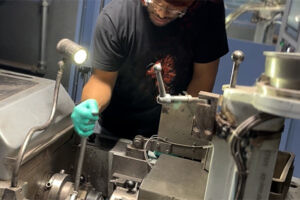 Anthony Teagle is one of those mechanics. He has been at the Mint for nearly 30 years and specializes in coin presses.
Anthony Teagle is one of those mechanics. He has been at the Mint for nearly 30 years and specializes in coin presses. My primary job is to make sure the presses are operating at the highest efficiency so that we can produce the best coins ever.
Anthony also assists with other machine maintenance, and he does so with joy and a sense of pride. He credits the unique atmosphere and variety of the job for his long career. There's always something interesting going on, and the job is never boring. [The Mint] allows you to be who you are as long as it's safe.
Anthony brings joy to his colleagues through his festive hats. It brings a little bit of levity, gives people a reason to smile even if they have a bad day.
Thanks to these talented employees, and many others, the Mint keeps coin production running smoothly 24 hours a day for five days per week, as well as during occasional weekend overtime production. In 2022, the Philadelphia Mint produced over 6.7 billion coins for Americans to use every day.
To read the complete article, see:
Inside the Philadelphia Mint's Production Maintenance Division
(https://www.usmint.gov/news/inside-the-mint/inside-the-philadelphia-mints-production-maintenance-division)
PHILADELPHIA DIME HEIST THIEVES CHARGED
The Philadelphia Inquirer reports that four men have been charged in the case of the two million stolen dimes. -Editor
Federal authorities unsealed charges against four men Friday in connection with the brazen theft of more than two million dimes from a truck hauling them from the U.S. Mint earlier this year.
The $234,500 heist — with a haul weighing more than a ton — was the culmination of a spree of tractor-trailer robberies in which the same crew stole frozen crab legs, shrimp, meat, beer and liquor from trucks passing through the region, prosecutors said in court filings.
Now, all four men charged — Rakiem Savage, 25; Ronald Byrd, 31; Haneef Palmer, 30; and Malik Palmer, 32, all of Philadelphia — are facing charges including conspiracy, robbery and theft of government money that could send them to prison for decades.
Investigators believe that the April 13 coin caper — which left thousands of dimes scattered across the roadway, shimmering in the sun as the thieves made their escape — came after weeks of Savage, Byrd and the Palmers committing similar crimes.
They allegedly hauled the drivers out of their trucks — sometimes by force — before opening the back of the trailers with bolt cutters.
The men often came equipped with a white box truck to transport the cargo they stole and then would later sell the goods over the internet, according to the seven-count indictment filed against them.
In March, prosecutors say, Savage stole 60 cases of Jose Cuervo off a truck. Two weeks before the dime robbery, he and the Palmers stole six refrigerators off another trailer, pulling the driver from the vehicle and forcing him to lie under their white box truck while they made off with his cargo.
The mystery of the missing dimes hasn't been completely solved yet. One of the thieves consulted an online calculator for an estimate of the total cash value of coins based on weight and denomination. Others converted thousands of dollars of dimes into cash at Coinstar machines or deposited them in banks. But the value of coins mentioned in the indictment amounts to only a couple thousand dollars. So who's still sitting on a pile of two million dimes? -Editor
To read the complete article, see:
Philly men charged with stealing more than $200,000 ... in dimes
(https://www.inquirer.com/news/dimes-us-mint-federal-reserve-rakiem-savage-ronald-byrd-haneef-palmer-malik-arrests-20231021.html)
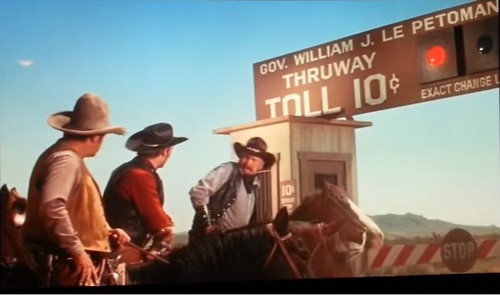
To watch the complete video, see:
A ____________ of dimes
(https://www.youtube.com/watch?v=-RwEpUHynTc)
To read the earlier E-Sylum articles, see:
WHOLE SHIPMENT OF DIMES SPILLED
(https://www.coinbooks.org/v21/esylum_v21n20a39.html)
TWO MILLION DIMES STOLEN
(https://www.coinbooks.org/v26/esylum_v26n16a34.html)
NOTES FROM E-SYLUM READERS: APRIL 23, 2023 : On the Philadelphia Dime Heist
(https://www.coinbooks.org/v26/esylum_v26n17a10.html)


